一 : 翻译Where did you g
翻译
Where did you go wrong in life?什么意思
Where did you go wrong in life?什么意思
你生活中遇到什么不如意事了吗?
二 : Unit 1 where did you go on vacation Section B全部课件.ppt
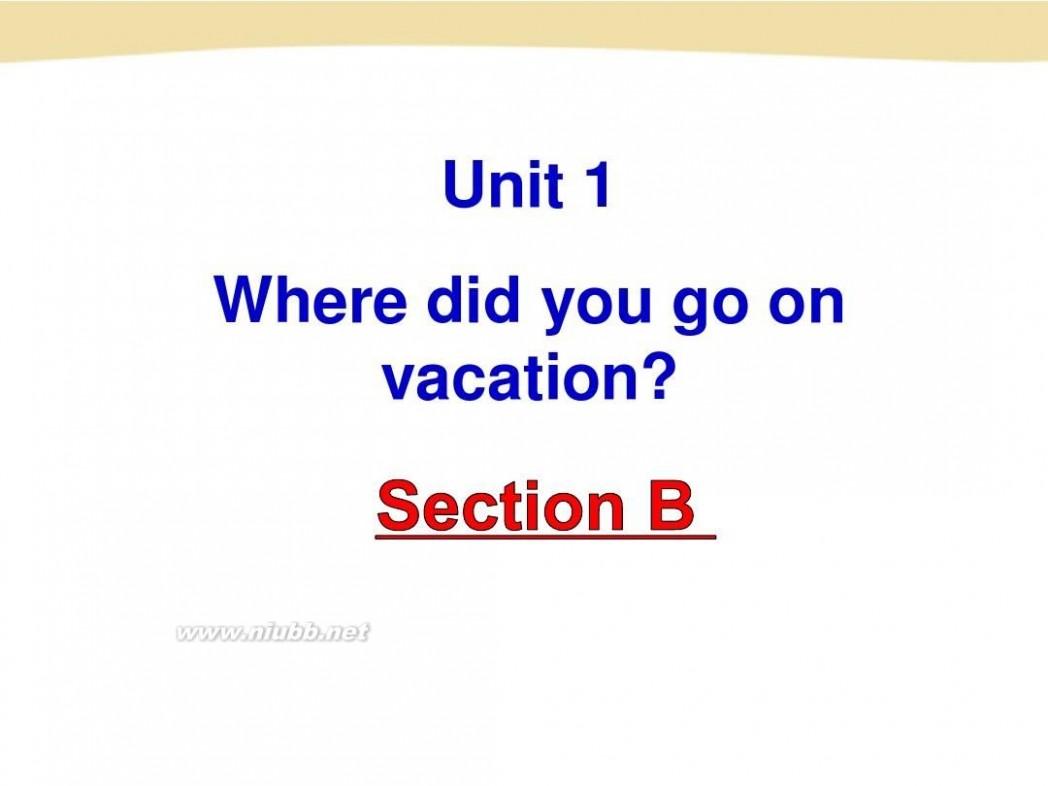
where did you go Unit 1 where did you go on vacation Section B全部课件.ppt

where did you go Unit 1 where did you go on vacation Section B全部课件.ppt
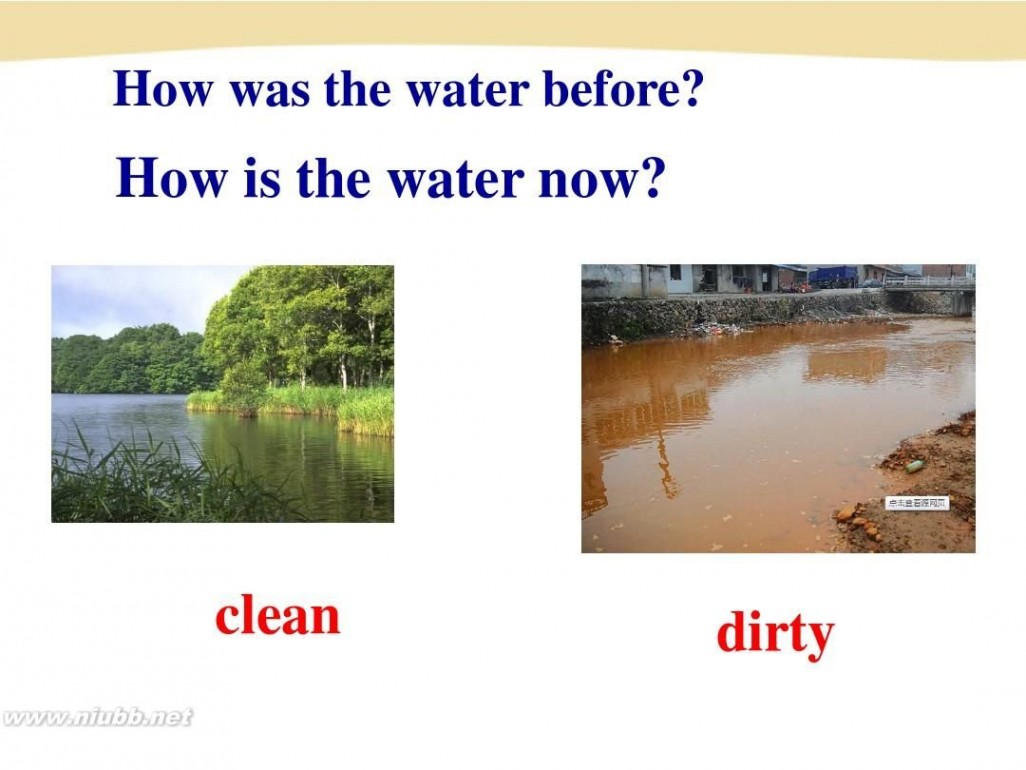
where did you go Unit 1 where did you go on vacation Section B全部课件.ppt

where did you go Unit 1 where did you go on vacation Section B全部课件.ppt
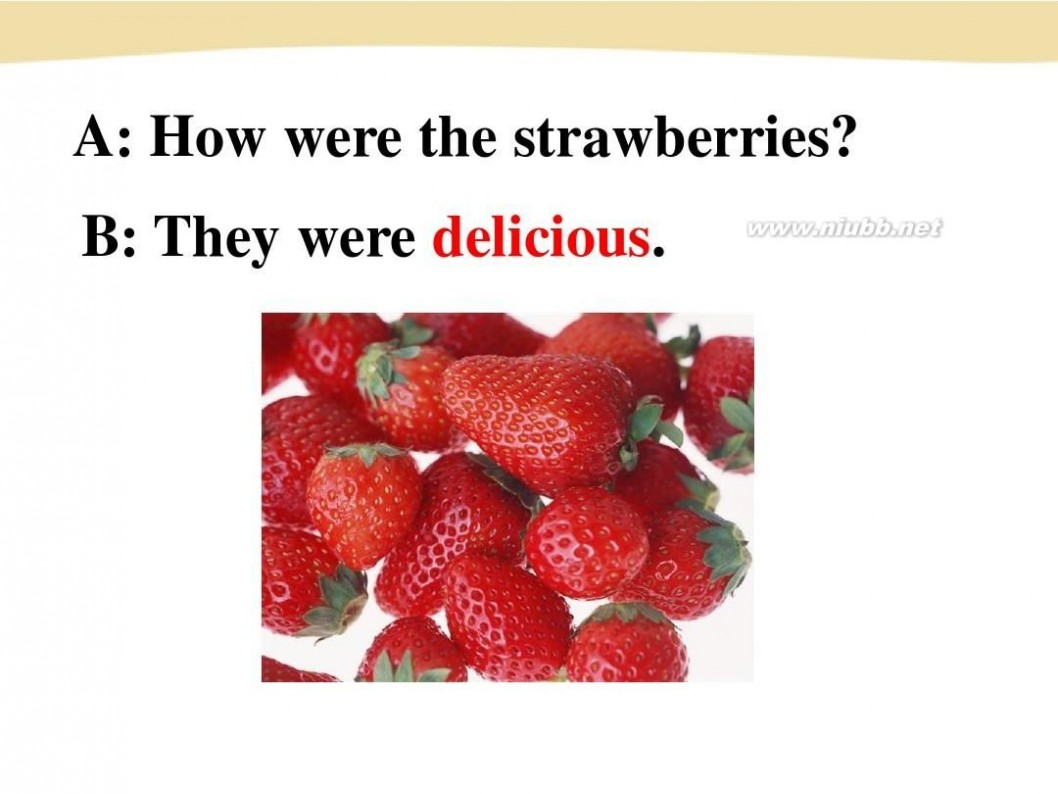
where did you go Unit 1 where did you go on vacation Section B全部课件.ppt

where did you go Unit 1 where did you go on vacation Section B全部课件.ppt
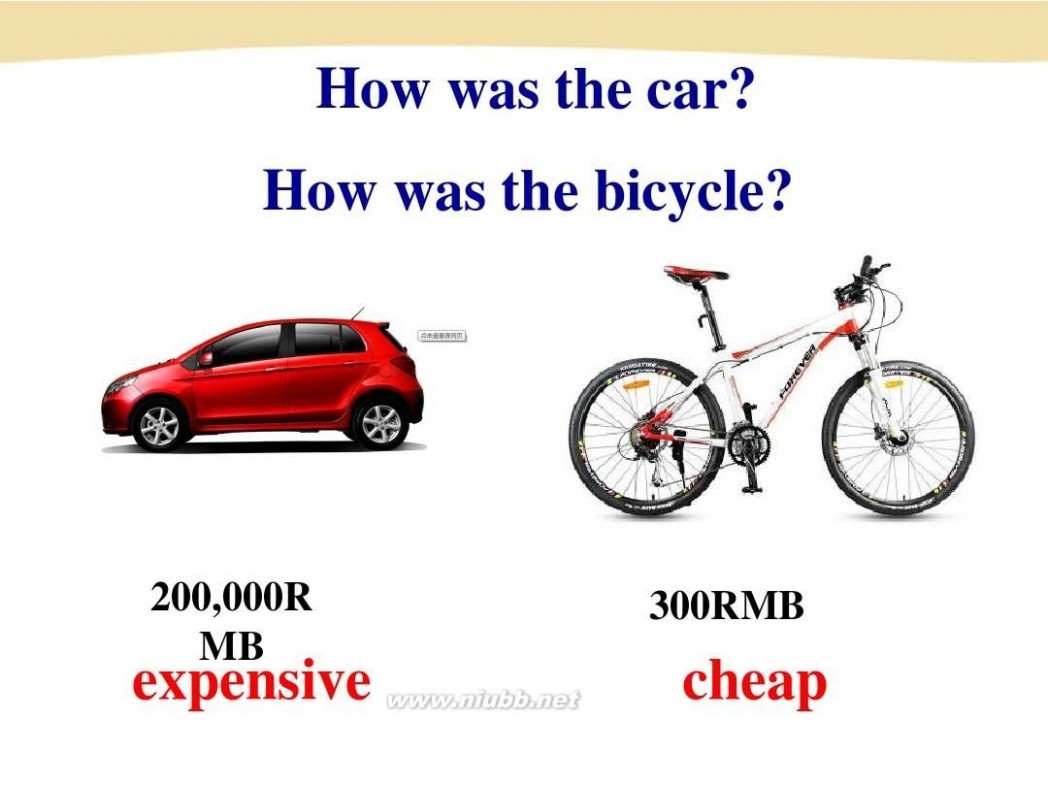
where did you go Unit 1 where did you go on vacation Section B全部课件.ppt
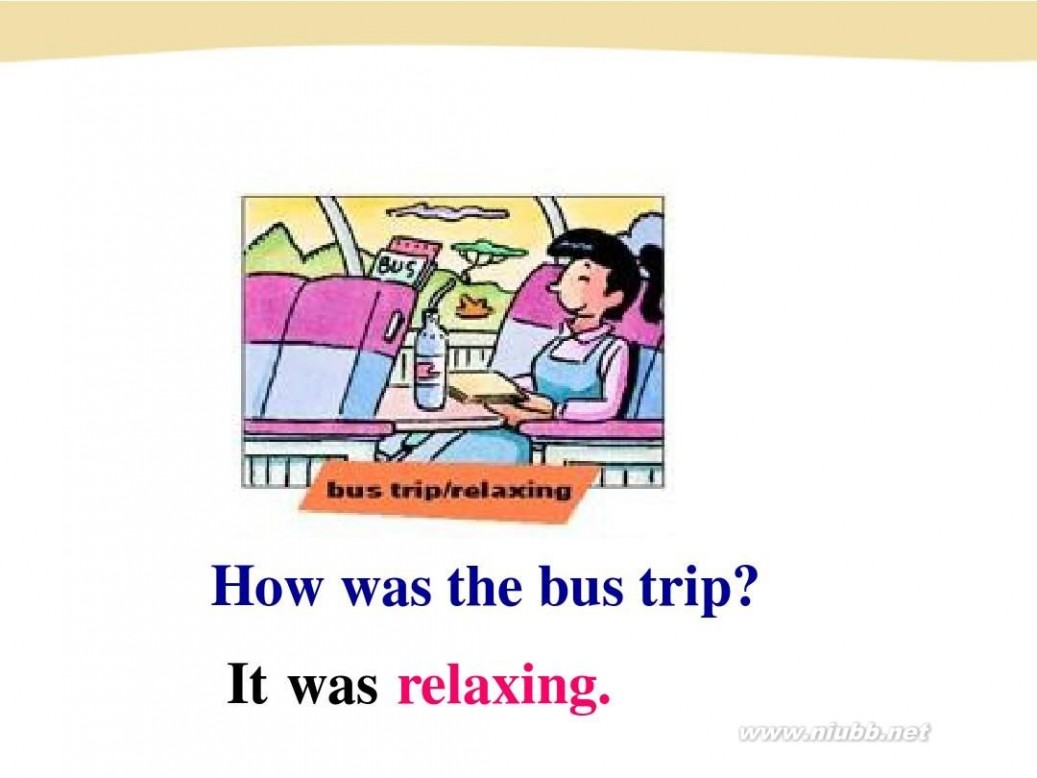
where did you go Unit 1 where did you go on vacation Section B全部课件.ppt
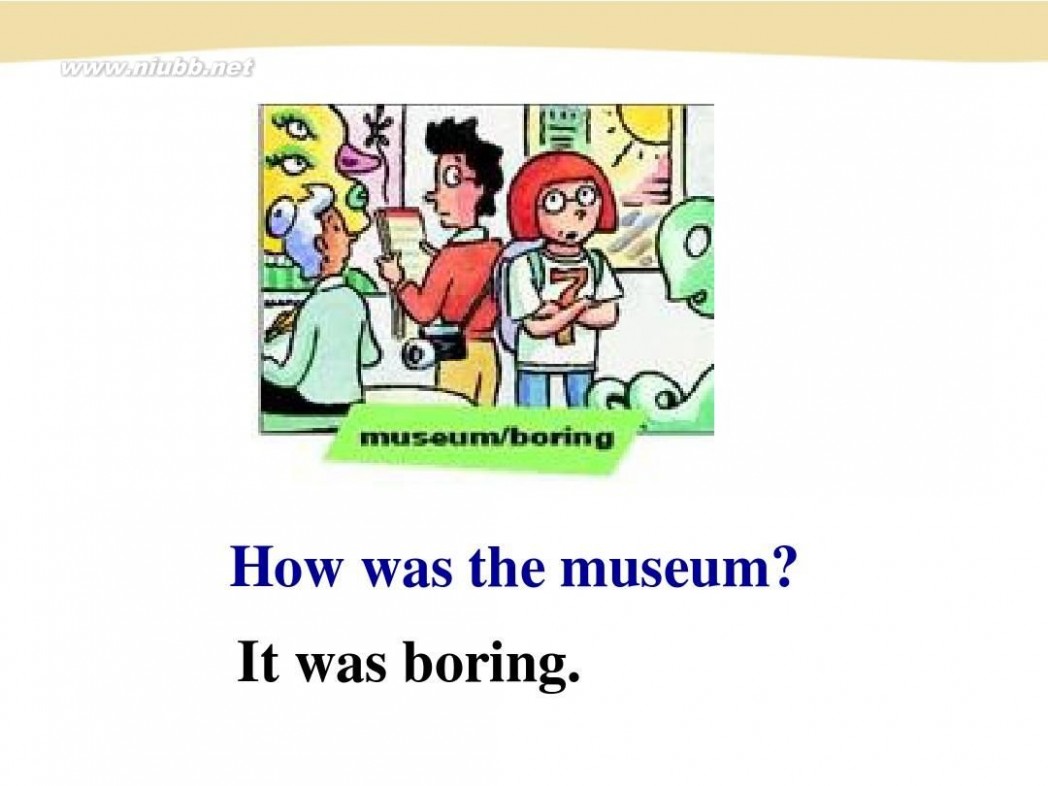
where did you go Unit 1 where did you go on vacation Section B全部课件.ppt
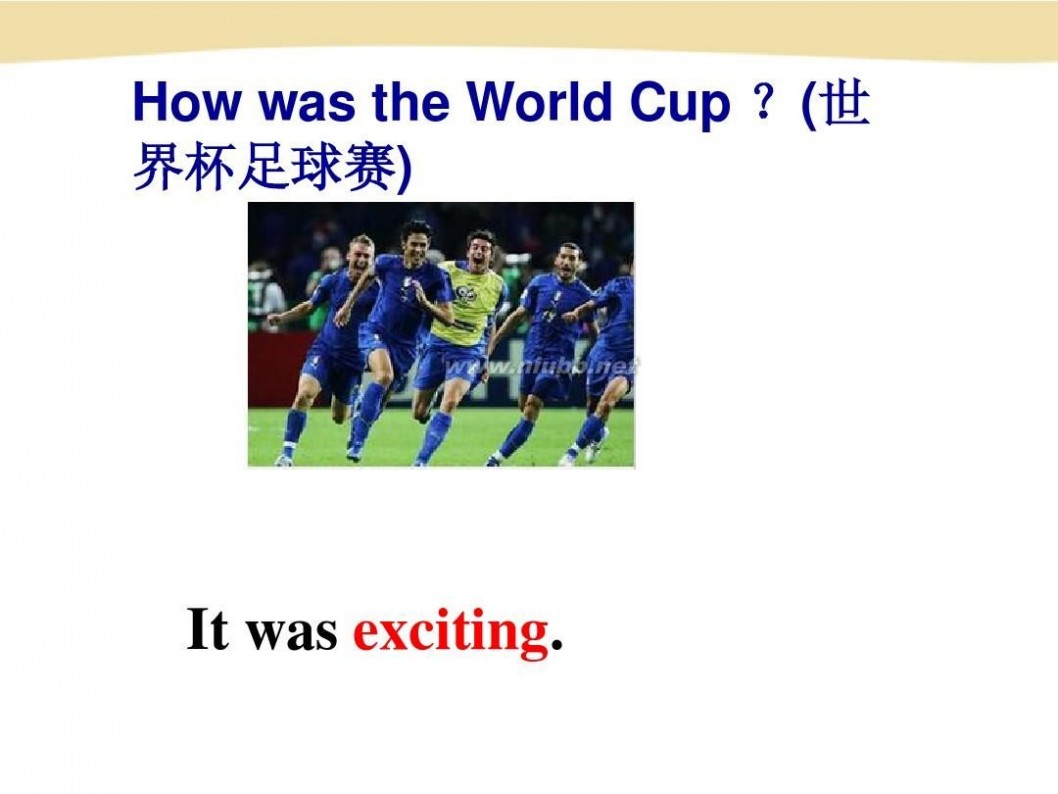
where did you go Unit 1 where did you go on vacation Section B全部课件.ppt
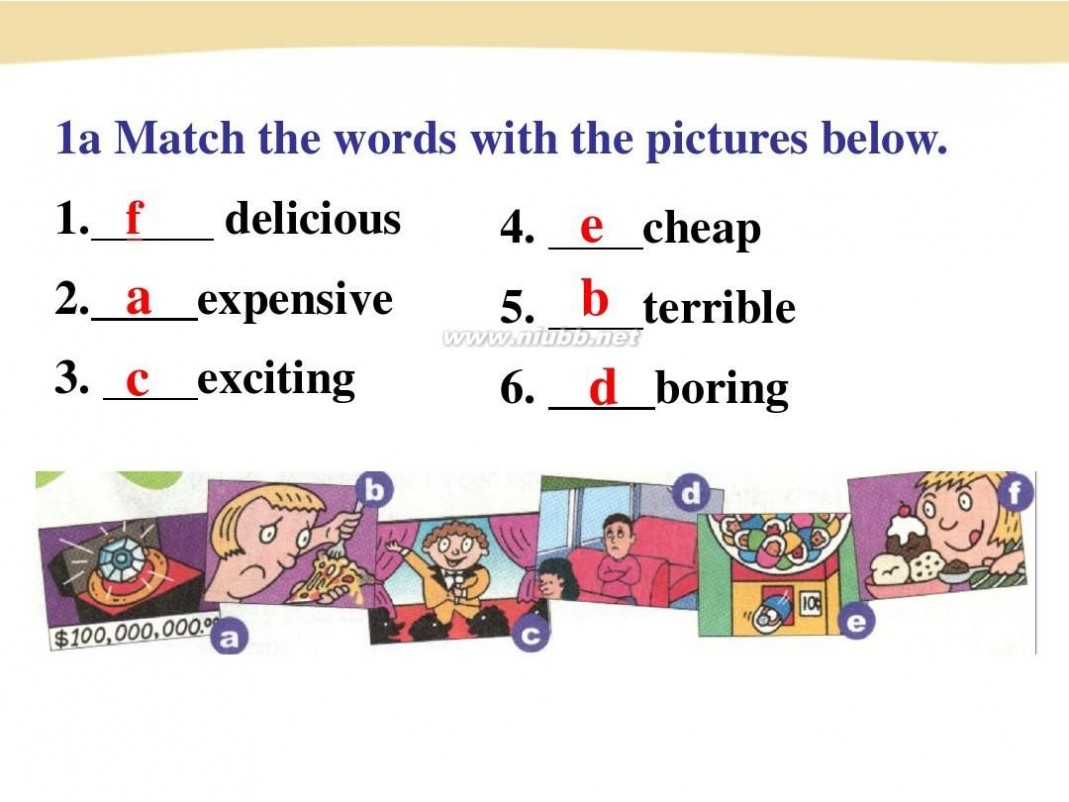
where did you go Unit 1 where did you go on vacation Section B全部课件.ppt
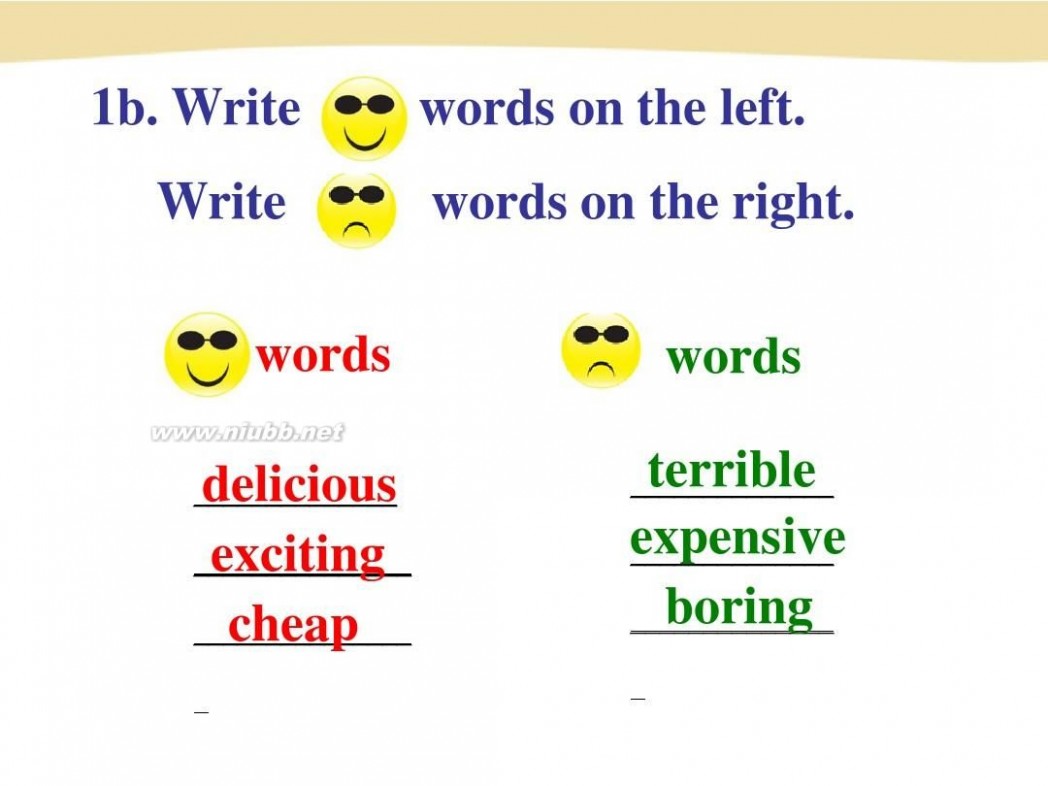
where did you go Unit 1 where did you go on vacation Section B全部课件.ppt
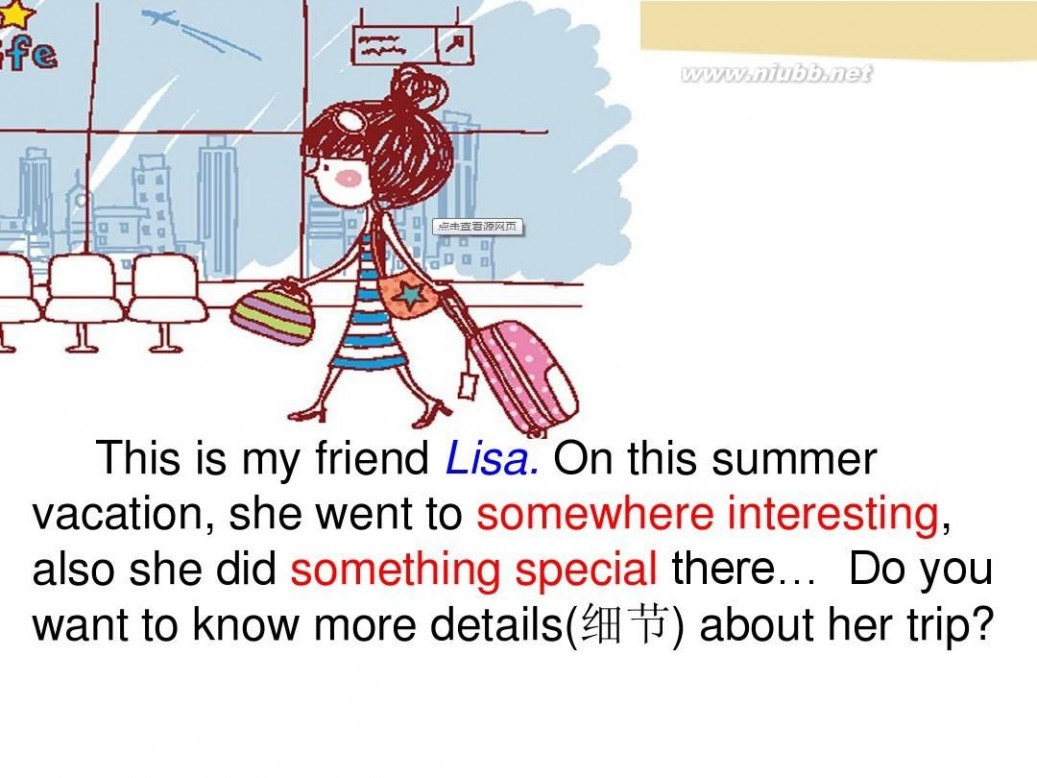
where did you go Unit 1 where did you go on vacation Section B全部课件.ppt

where did you go Unit 1 where did you go on vacation Section B全部课件.ppt
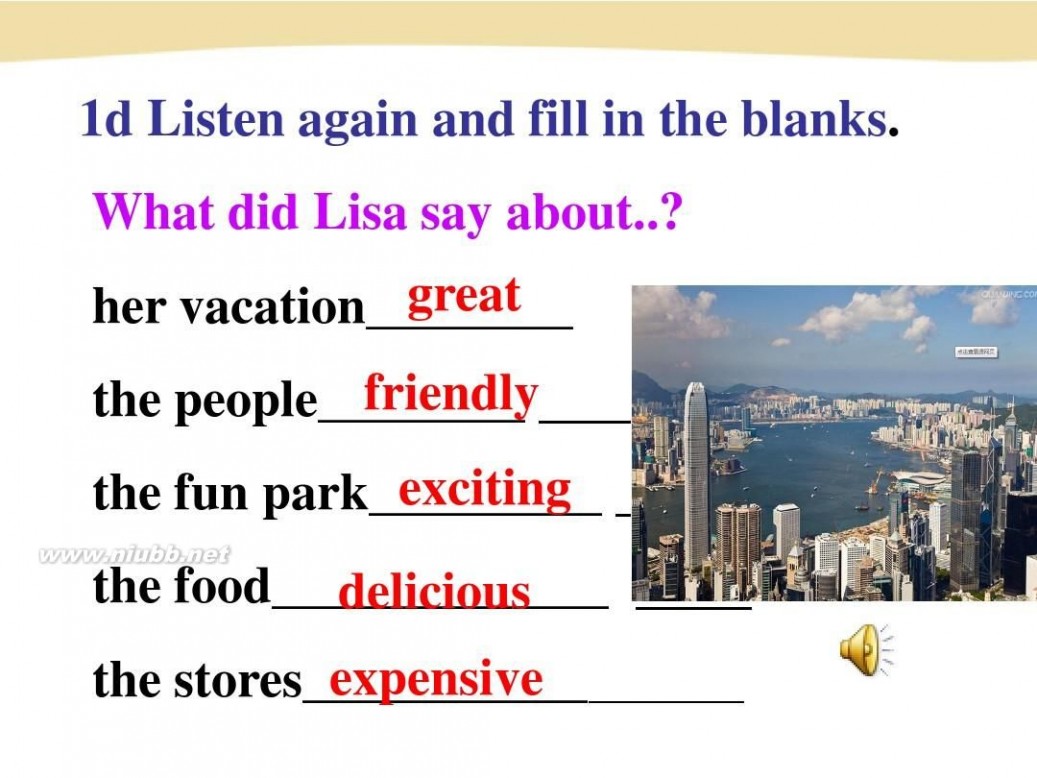
where did you go Unit 1 where did you go on vacation Section B全部课件.ppt
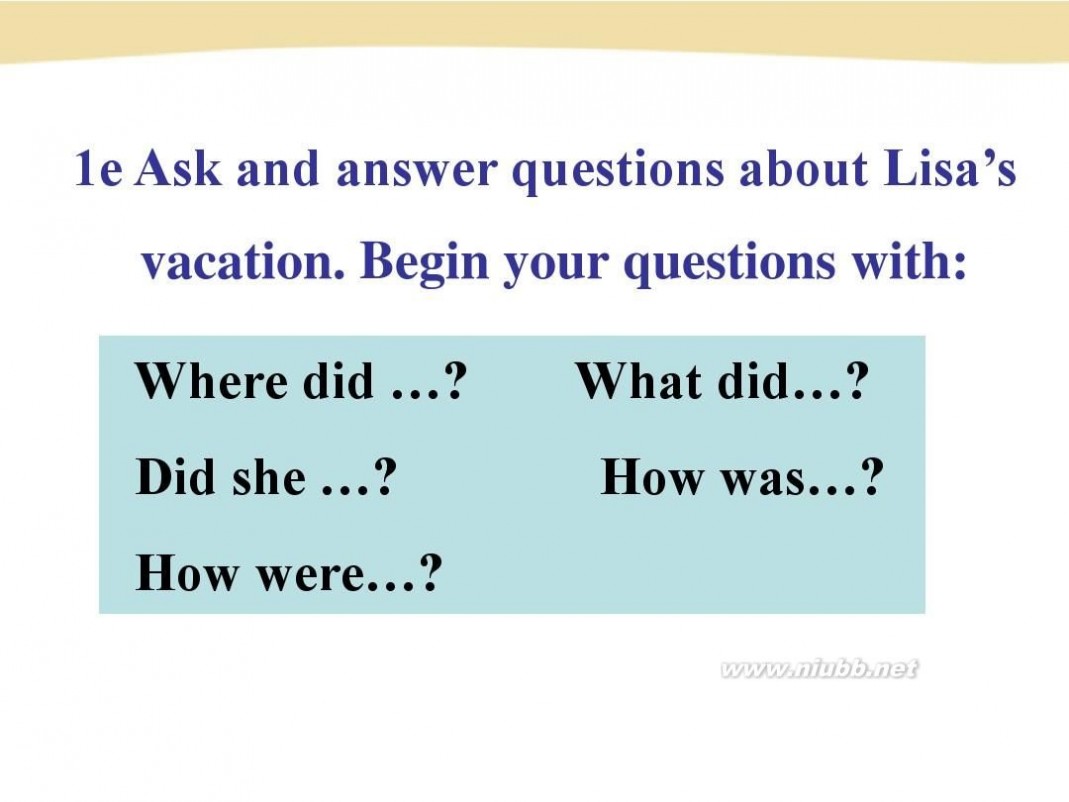
where did you go Unit 1 where did you go on vacation Section B全部课件.ppt
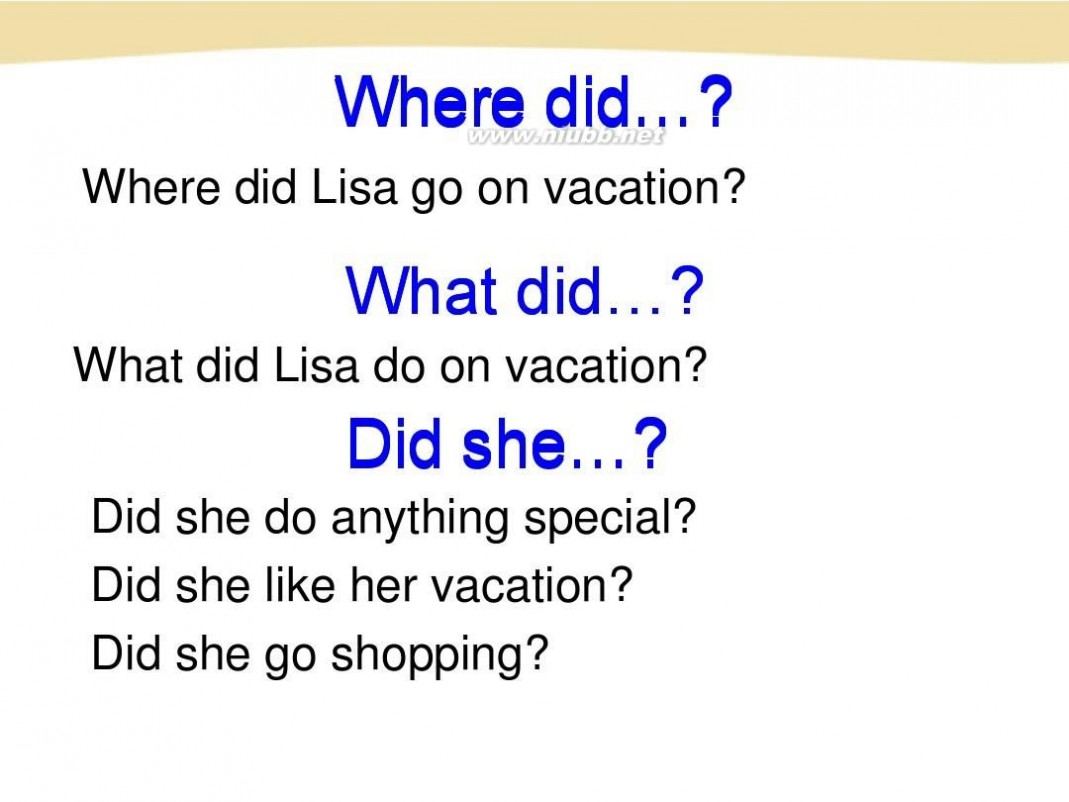
where did you go Unit 1 where did you go on vacation Section B全部课件.ppt
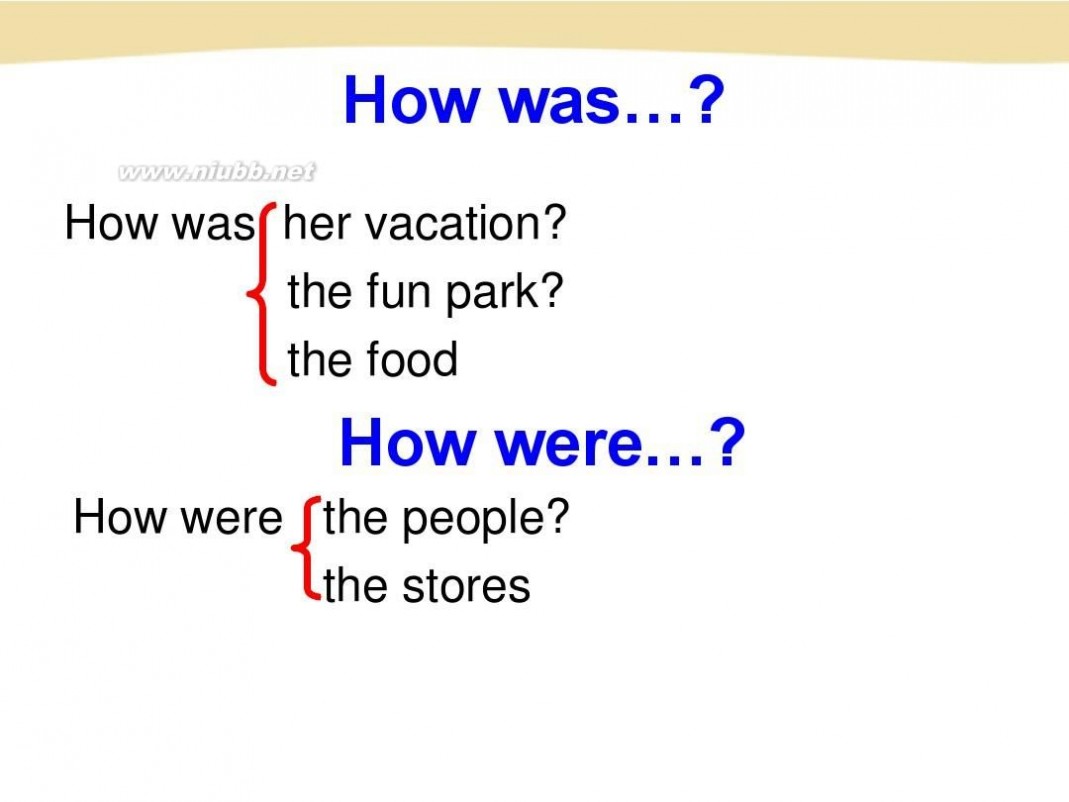
where did you go Unit 1 where did you go on vacation Section B全部课件.ppt

where did you go Unit 1 where did you go on vacation Section B全部课件.ppt

where did you go Unit 1 where did you go on vacation Section B全部课件.ppt 扩展:九年级英语unit1课件 / starter unit 1课件 / 九年级英语unit2课件

where did you go Unit 1 where did you go on vacation Section B全部课件.ppt

where did you go Unit 1 where did you go on vacation Section B全部课件.ppt
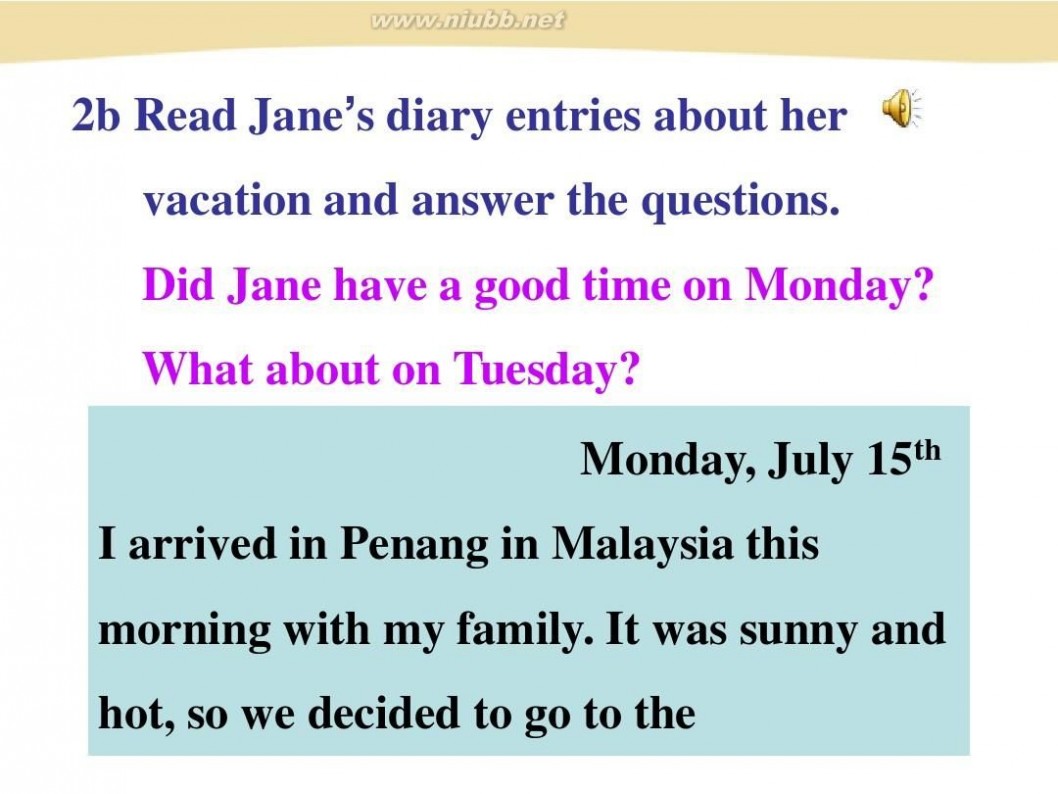
where did you go Unit 1 where did you go on vacation Section B全部课件.ppt
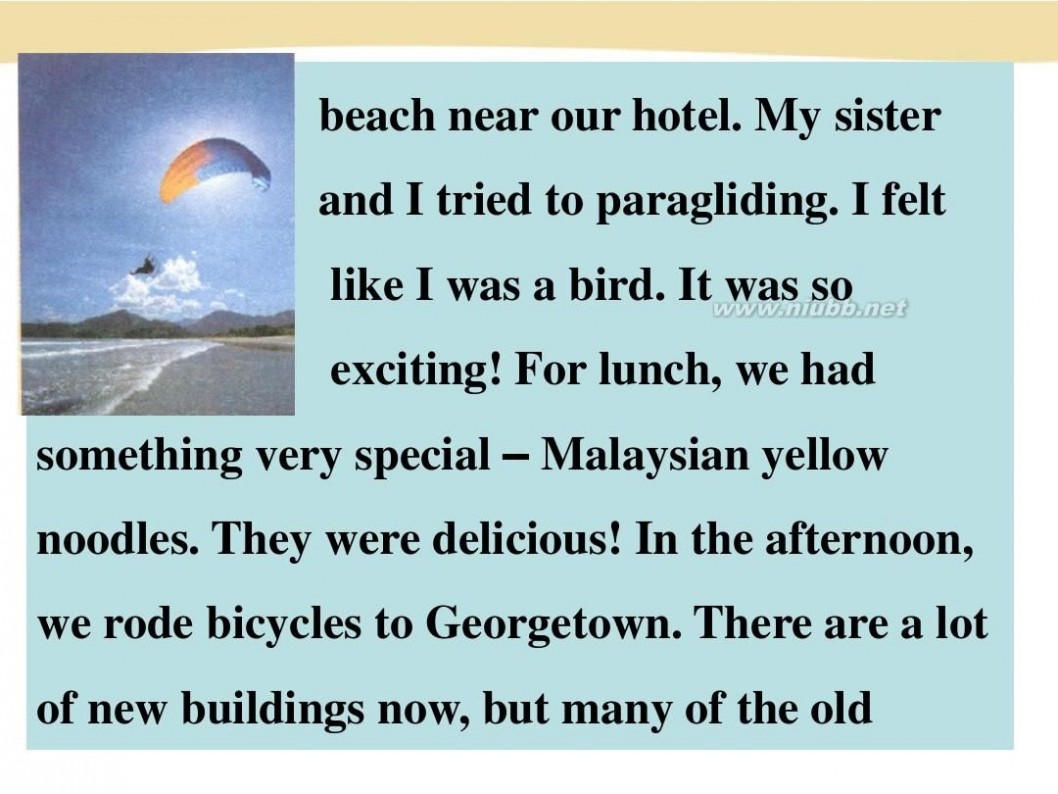
where did you go Unit 1 where did you go on vacation Section B全部课件.ppt
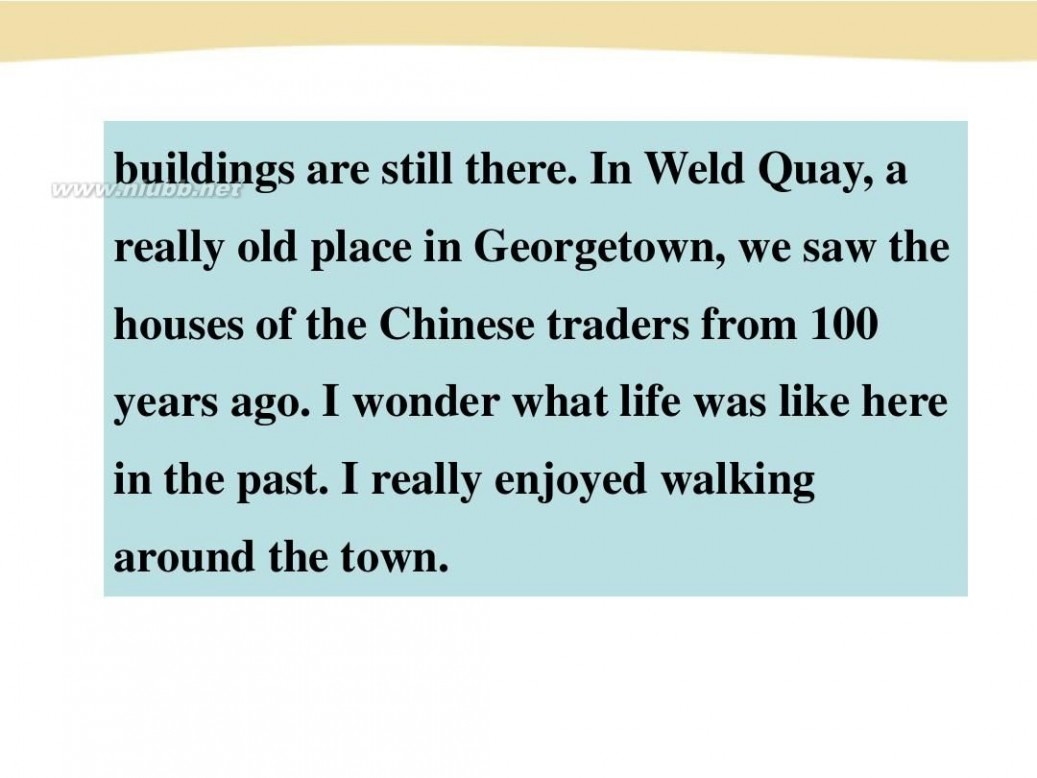
where did you go Unit 1 where did you go on vacation Section B全部课件.ppt
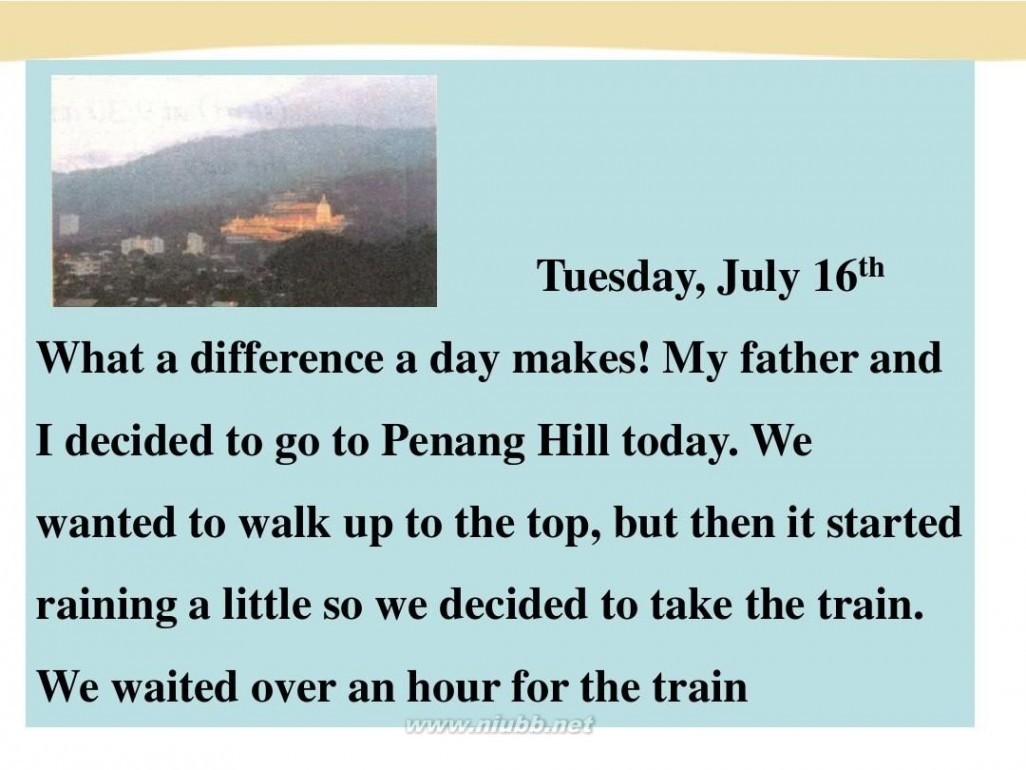
where did you go Unit 1 where did you go on vacation Section B全部课件.ppt

where did you go Unit 1 where did you go on vacation Section B全部课件.ppt
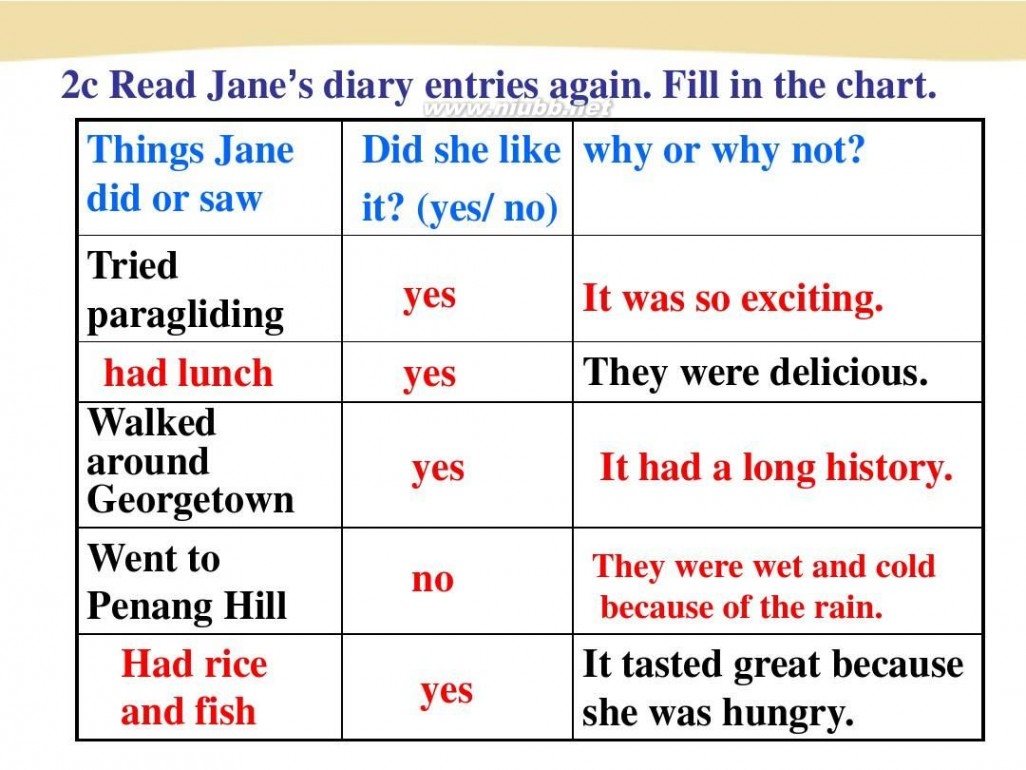
where did you go Unit 1 where did you go on vacation Section B全部课件.ppt
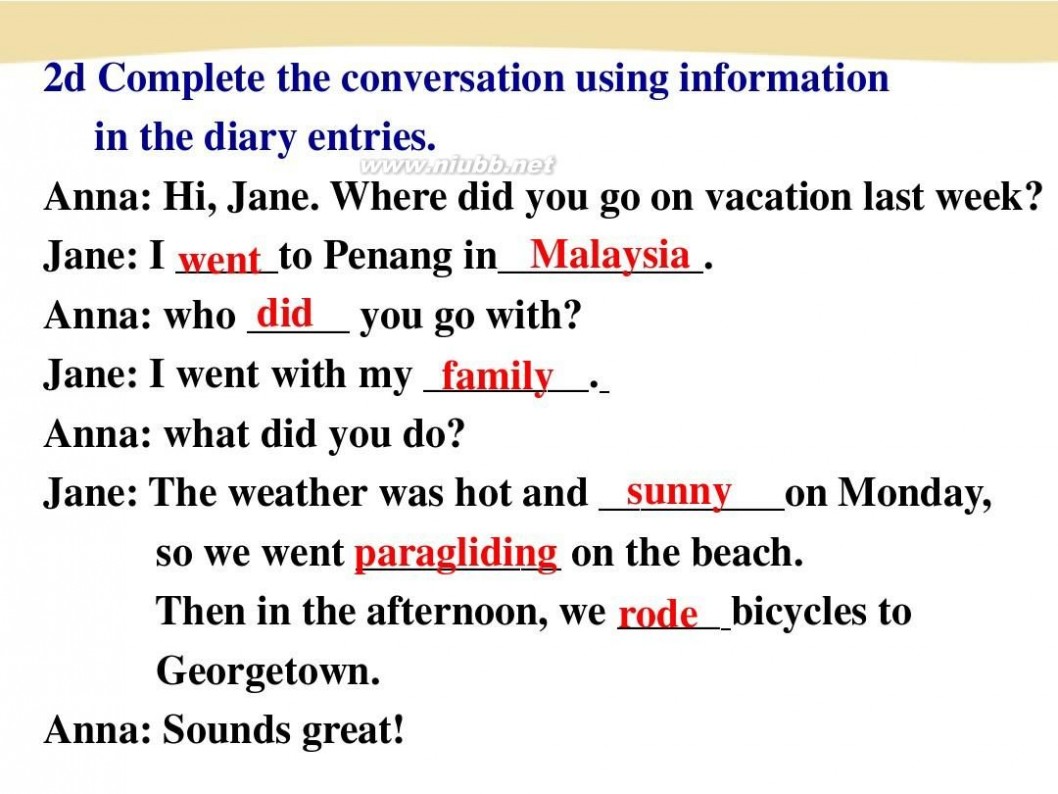
where did you go Unit 1 where did you go on vacation Section B全部课件.ppt

where did you go Unit 1 where did you go on vacation Section B全部课件.ppt
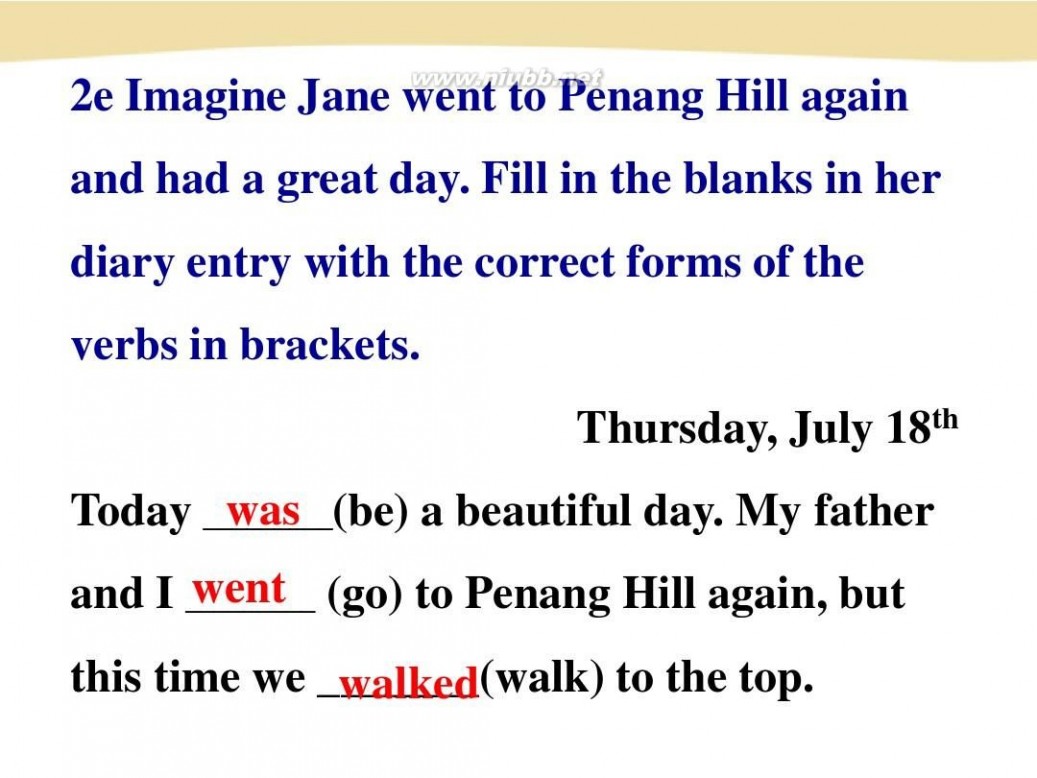
where did you go Unit 1 where did you go on vacation Section B全部课件.ppt
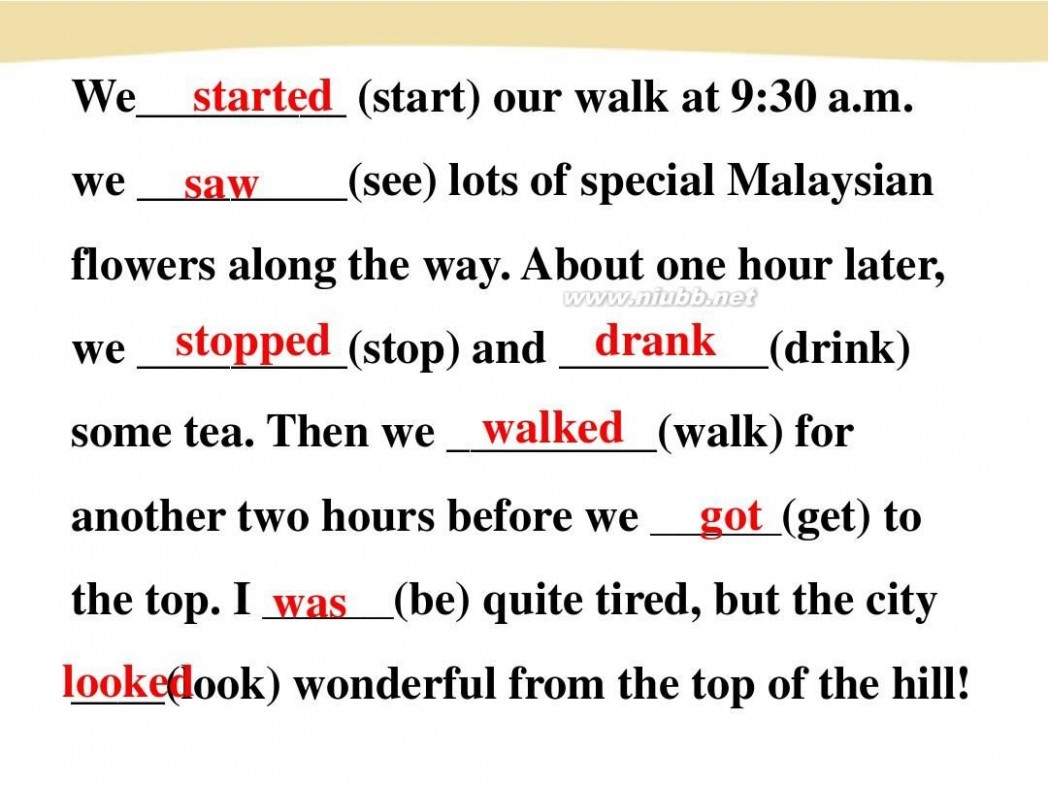
where did you go Unit 1 where did you go on vacation Section B全部课件.ppt

where did you go Unit 1 where did you go on vacation Section B全部课件.ppt

where did you go Unit 1 where did you go on vacation Section B全部课件.ppt
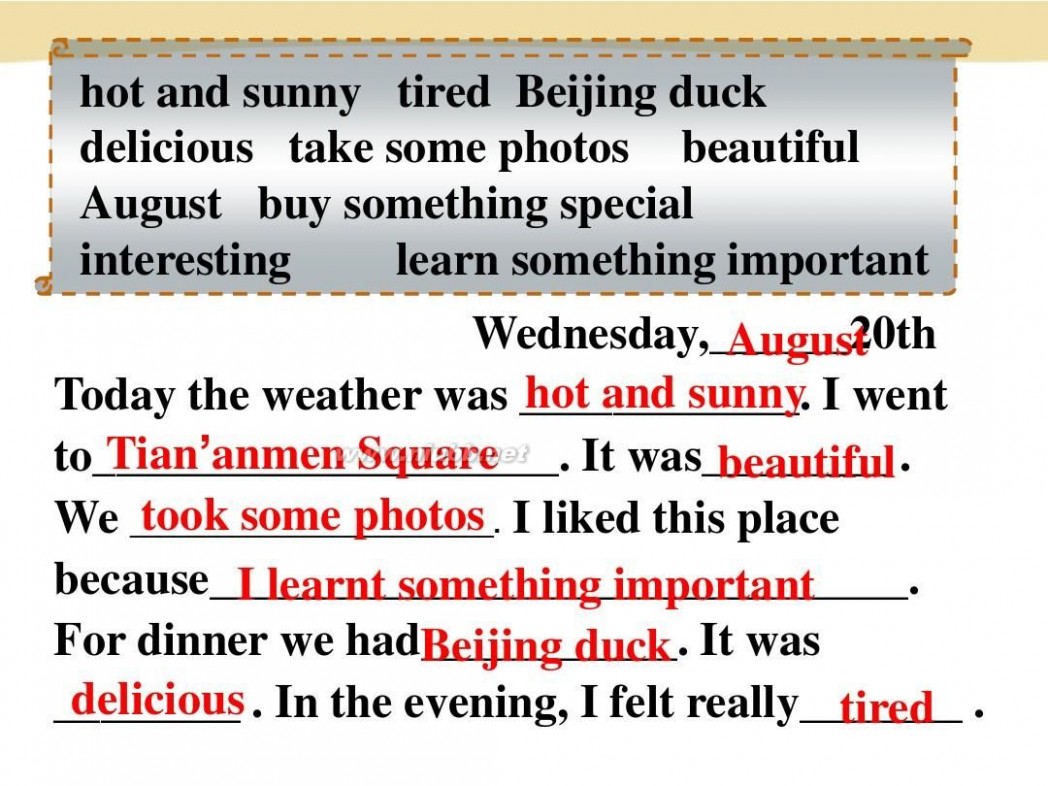
where did you go Unit 1 where did you go on vacation Section B全部课件.ppt
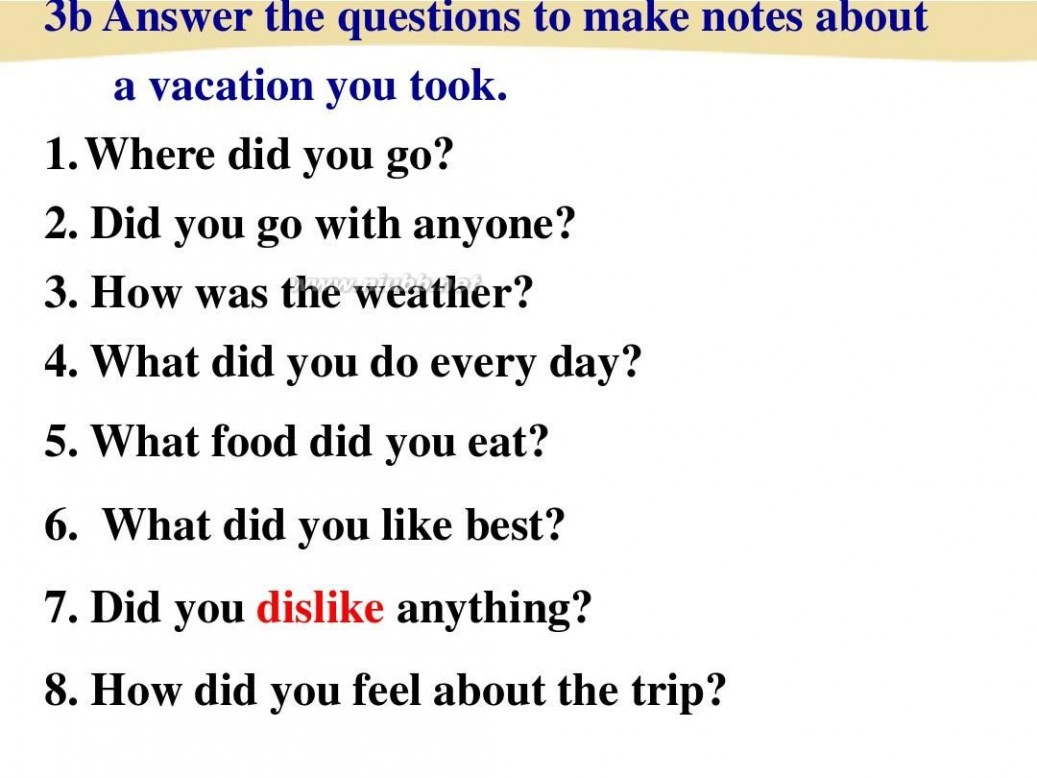
where did you go Unit 1 where did you go on vacation Section B全部课件.ppt

where did you go Unit 1 where did you go on vacation Section B全部课件.ppt
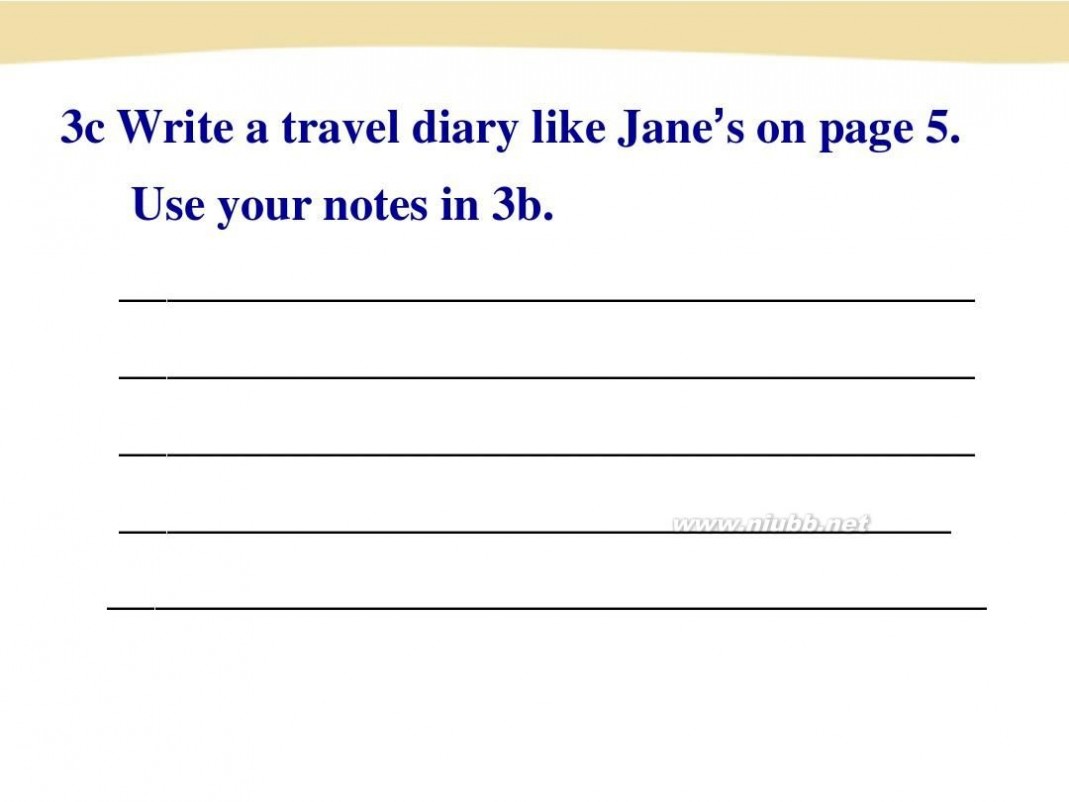
where did you go Unit 1 where did you go on vacation Section B全部课件.ppt
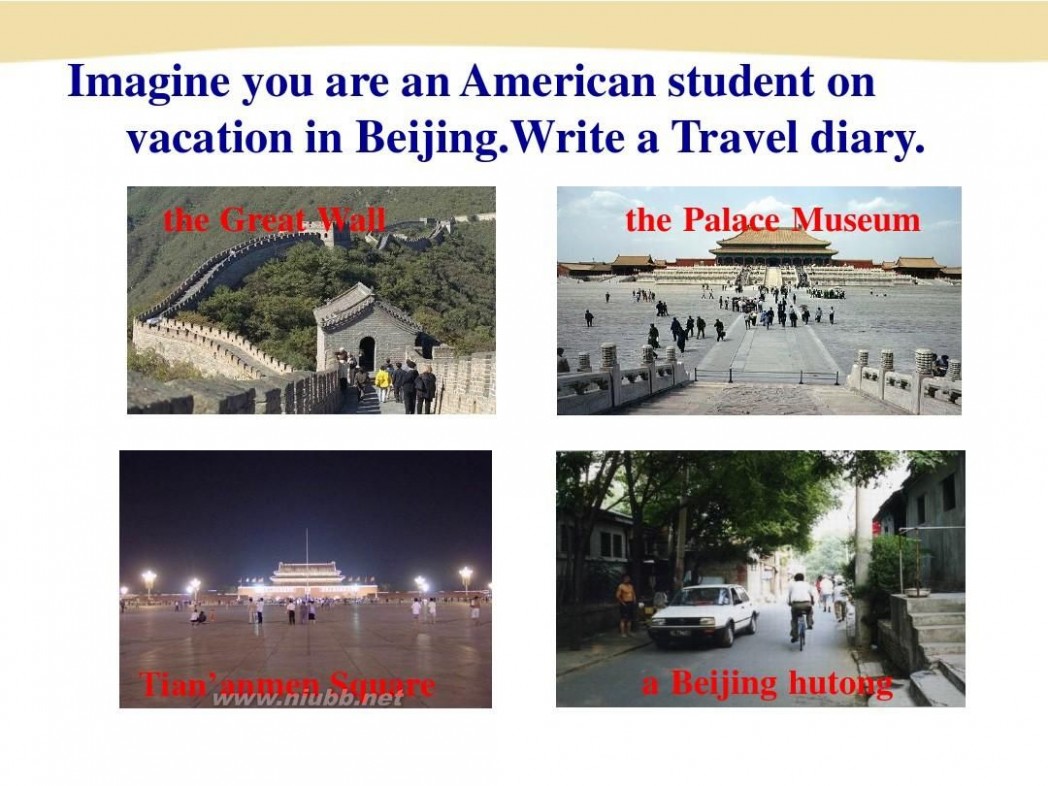
where did you go Unit 1 where did you go on vacation Section B全部课件.ppt
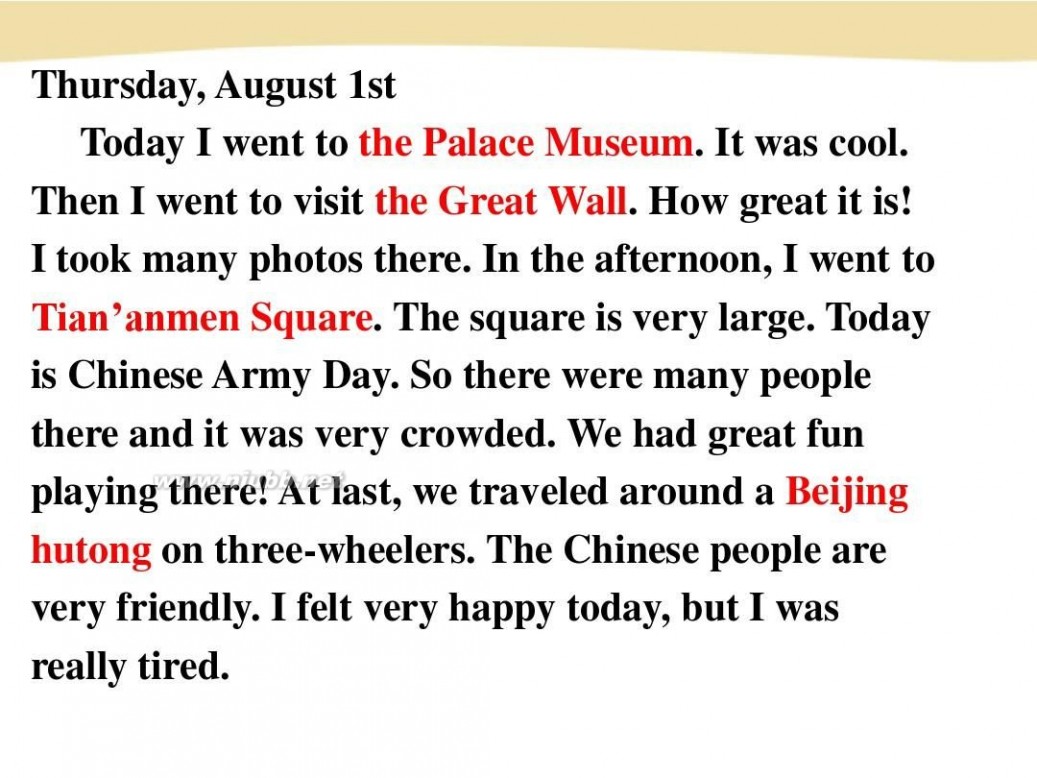
where did you go Unit 1 where did you go on vacation Section B全部课件.ppt 扩展:九年级英语unit1课件 / starter unit 1课件 / 九年级英语unit2课件
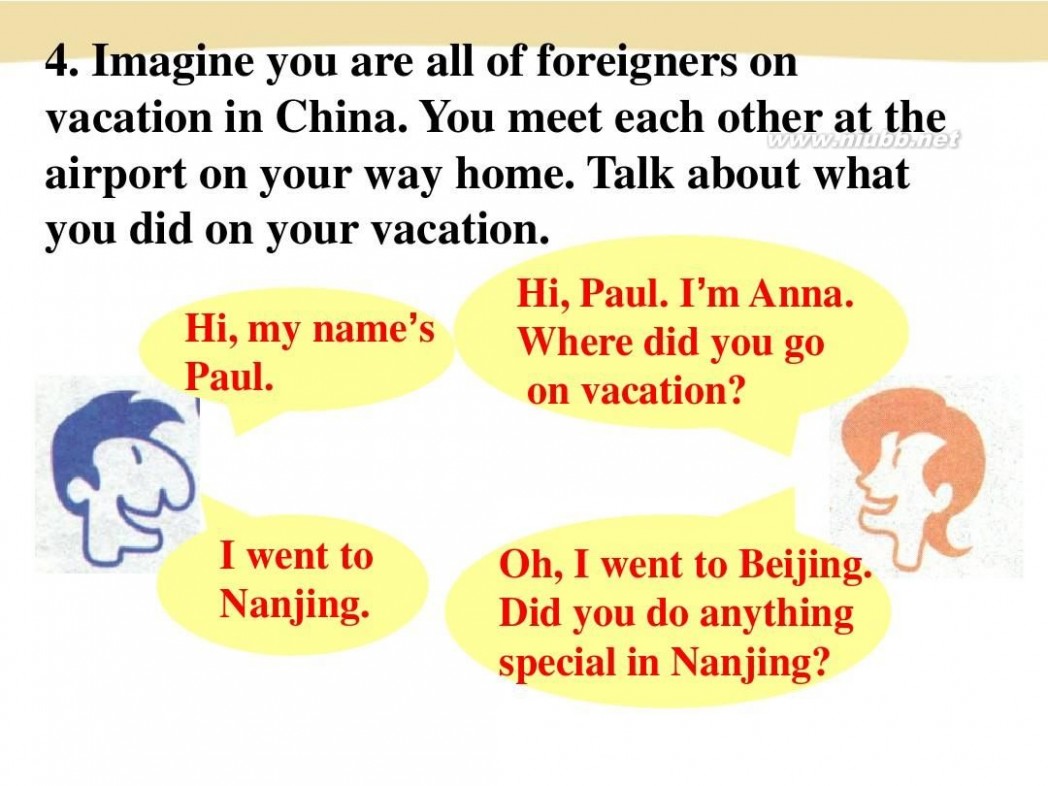
where did you go Unit 1 where did you go on vacation Section B全部课件.ppt
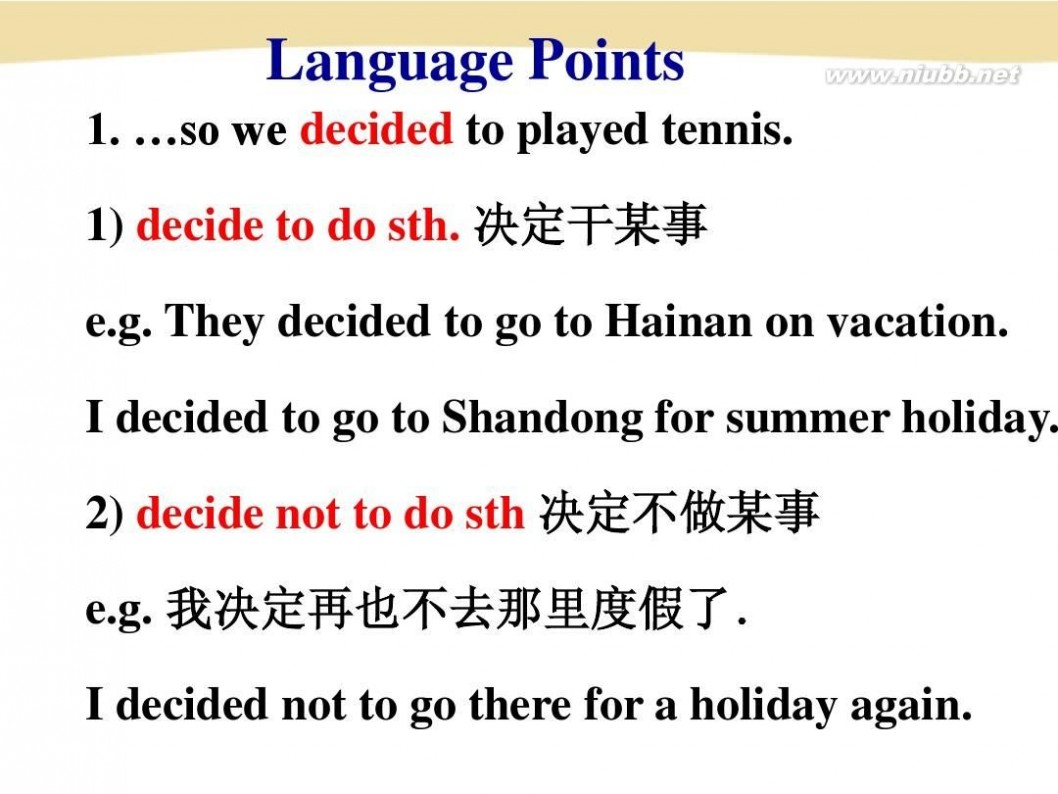
where did you go Unit 1 where did you go on vacation Section B全部课件.ppt

where did you go Unit 1 where did you go on vacation Section B全部课件.ppt
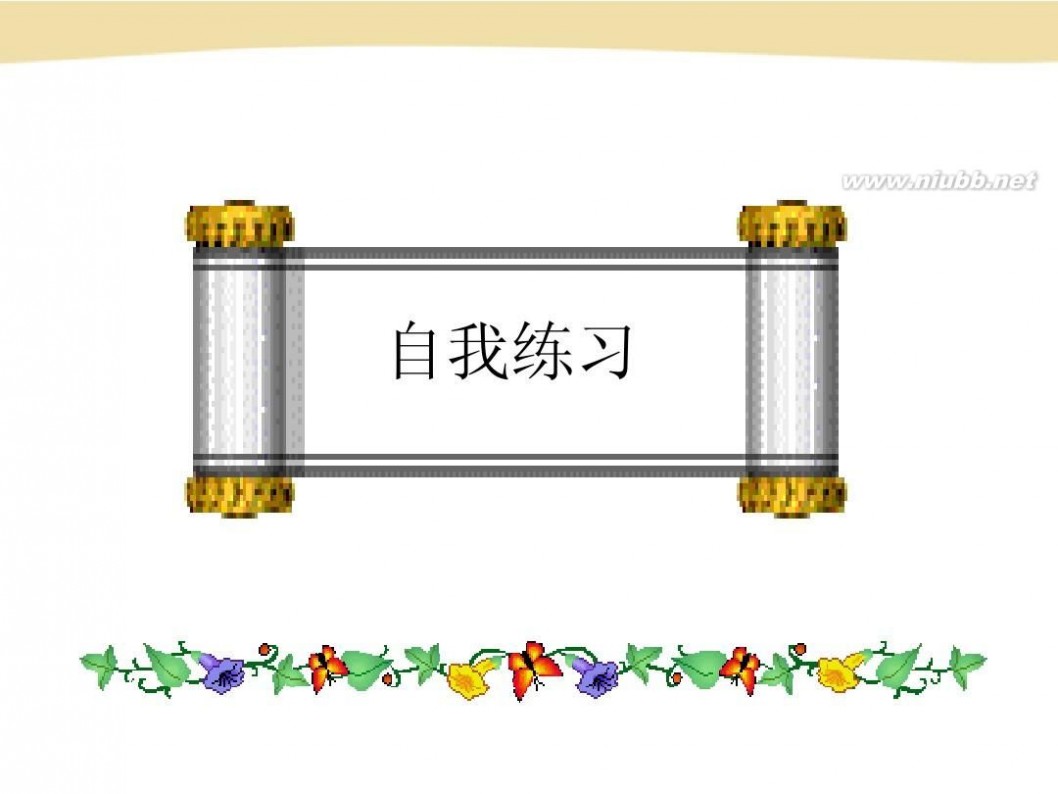
where did you go Unit 1 where did you go on vacation Section B全部课件.ppt
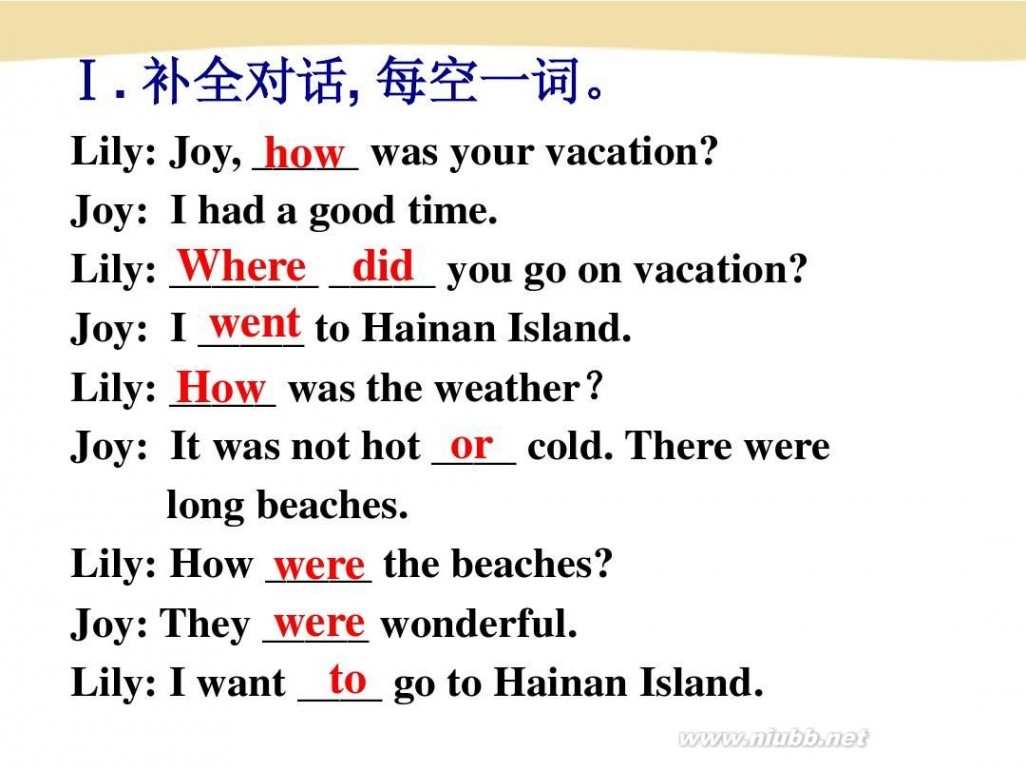
where did you go Unit 1 where did you go on vacation Section B全部课件.ppt
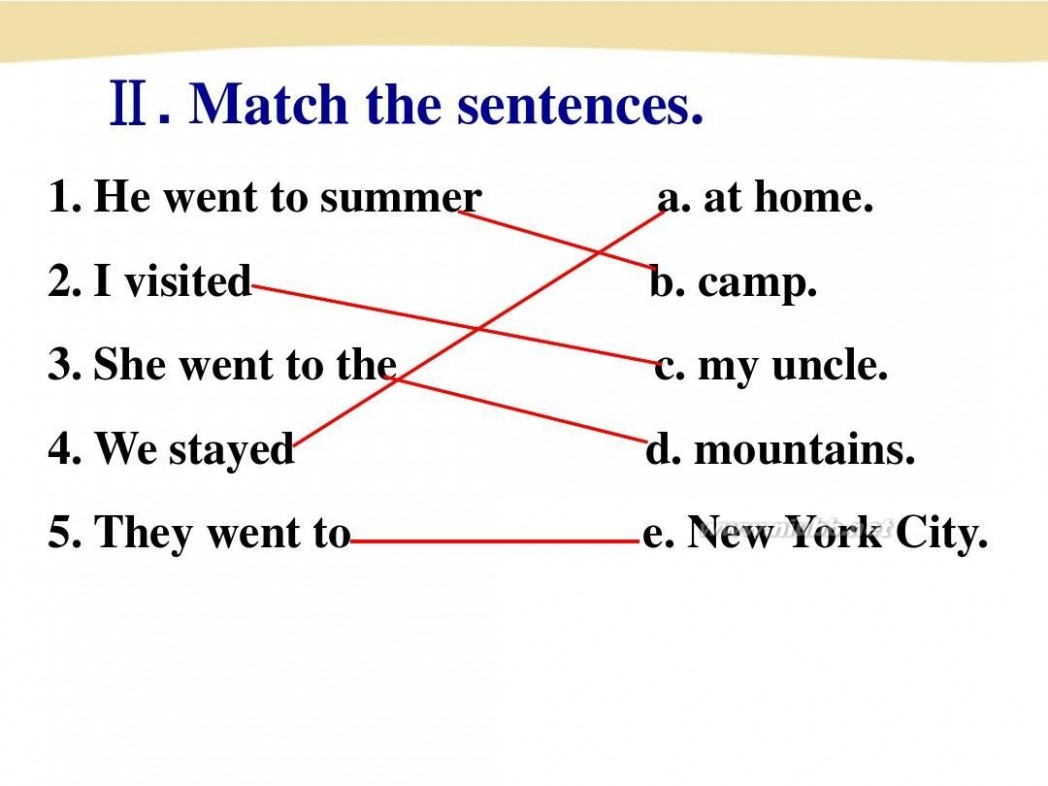
where did you go Unit 1 where did you go on vacation Section B全部课件.ppt
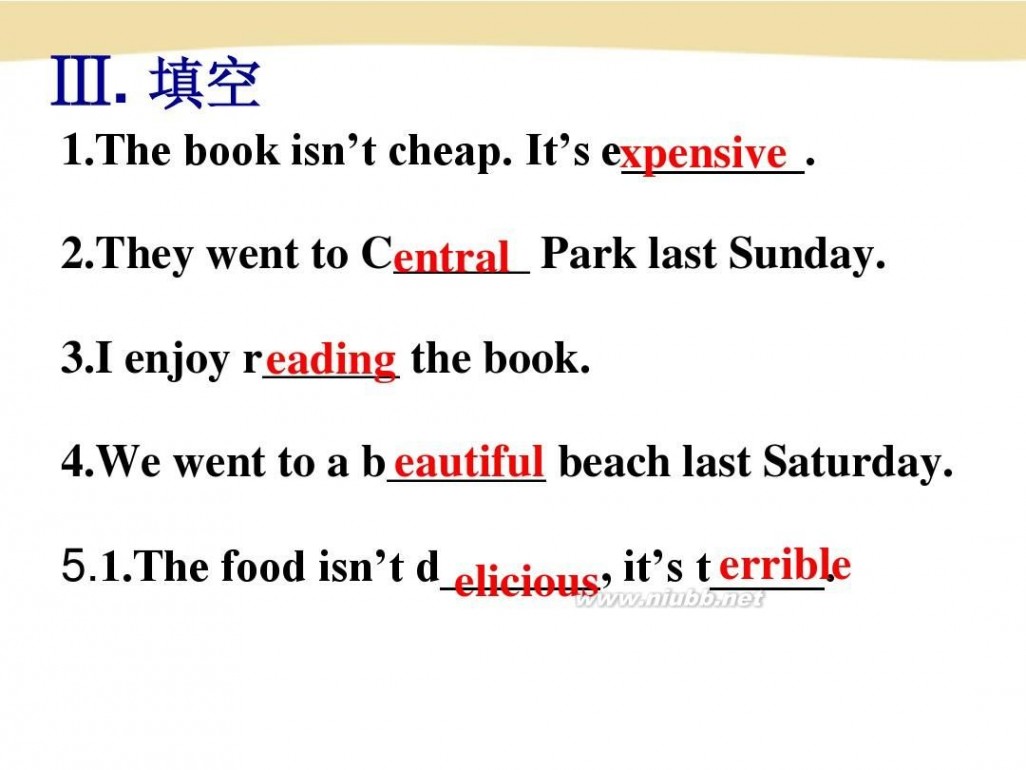
where did you go Unit 1 where did you go on vacation Section B全部课件.ppt

where did you go Unit 1 where did you go on vacation Section B全部课件.ppt
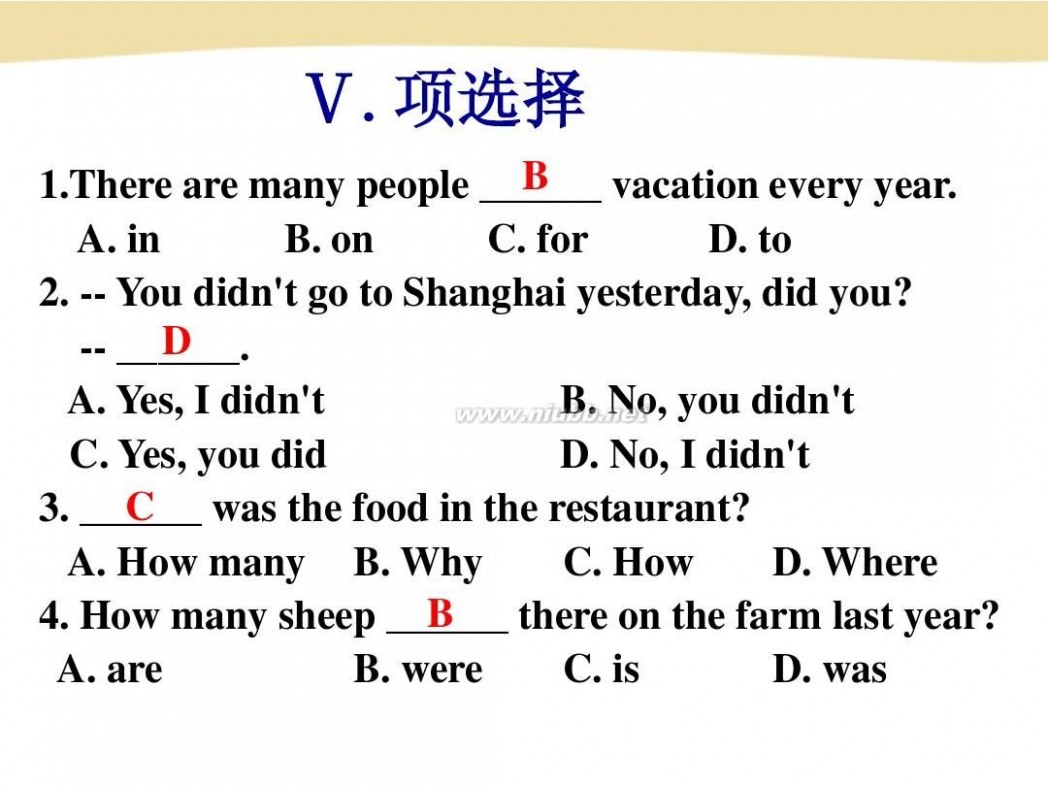
where did you go Unit 1 where did you go on vacation Section B全部课件.ppt

where did you go Unit 1 where did you go on vacation Section B全部课件.ppt
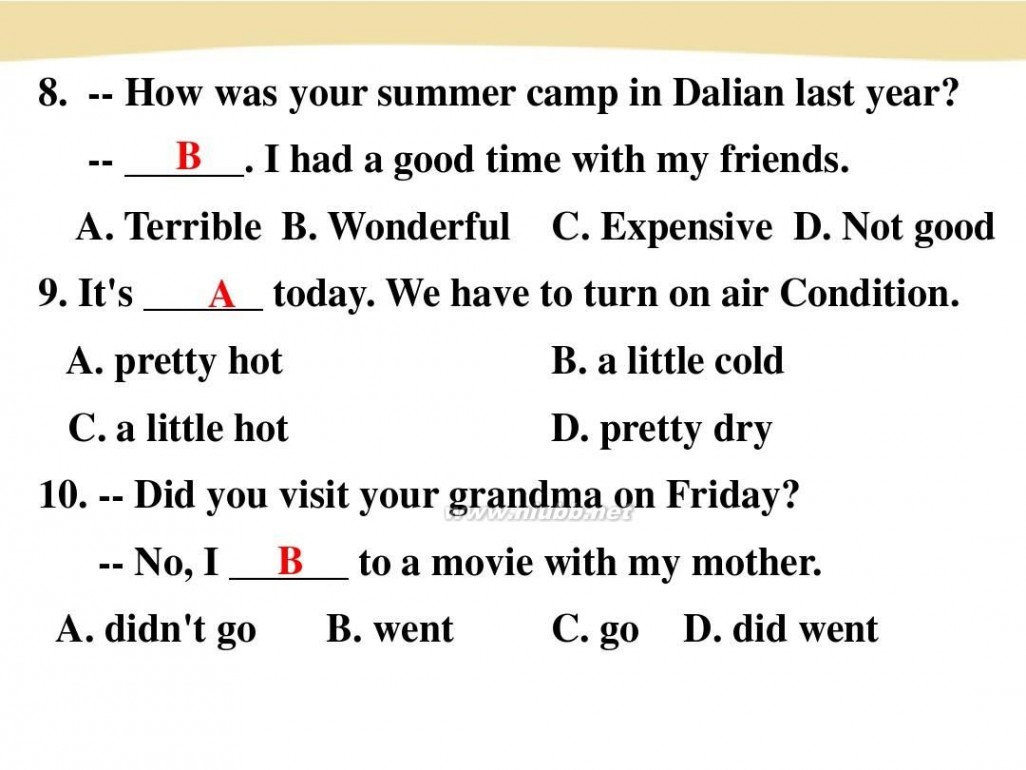
where did you go Unit 1 where did you go on vacation Section B全部课件.ppt
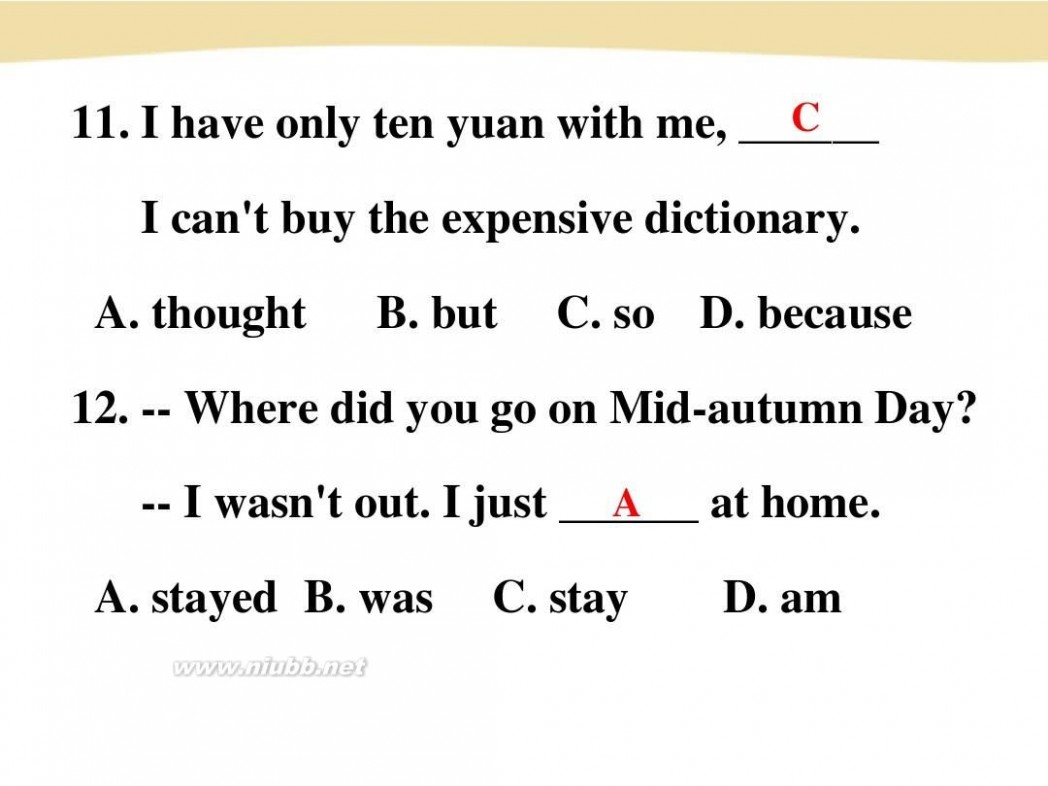
where did you go Unit 1 where did you go on vacation Section B全部课件.ppt
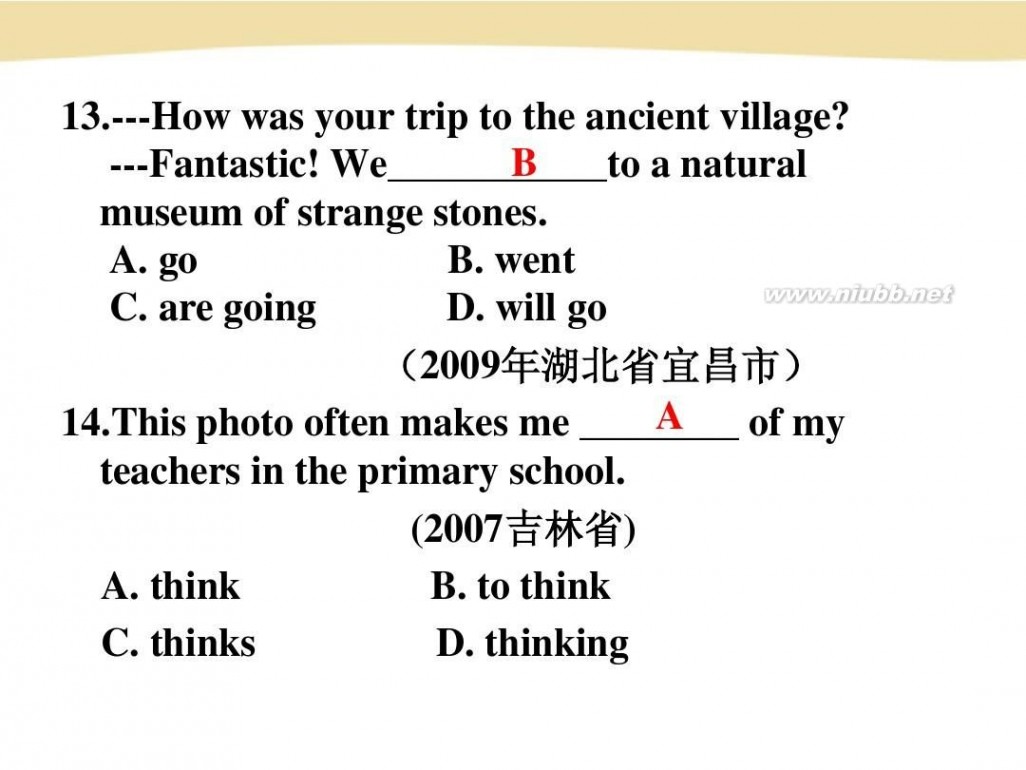
where did you go Unit 1 where did you go on vacation Section B全部课件.ppt
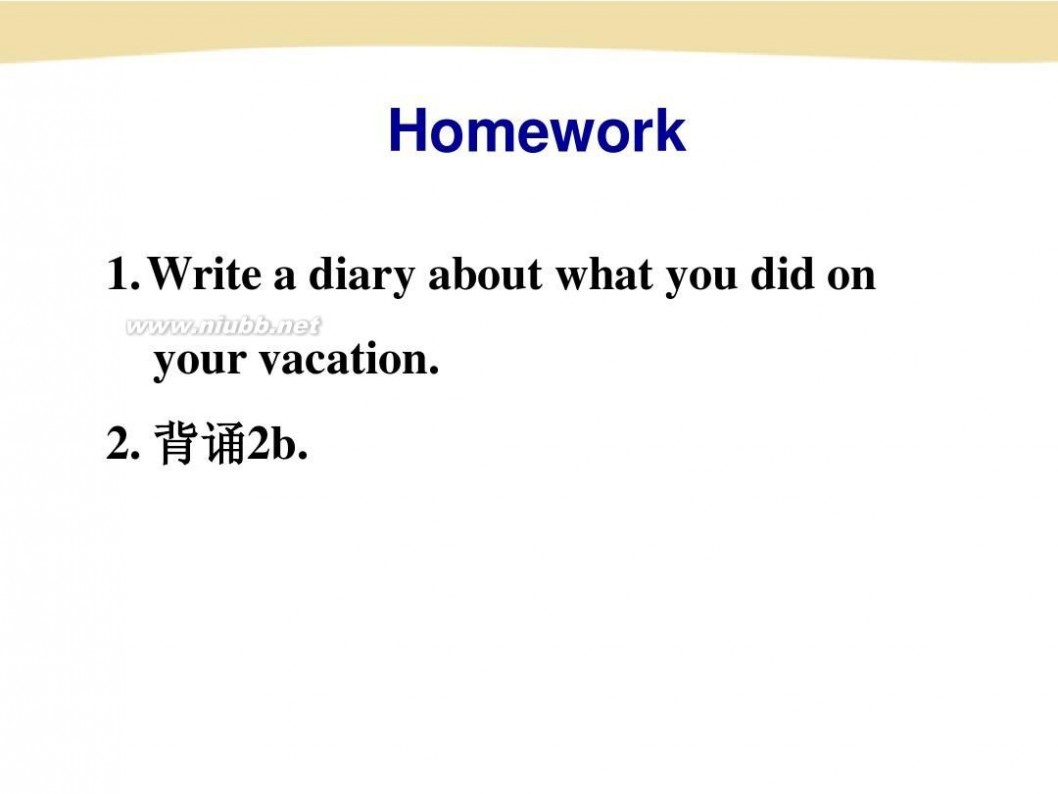
where did you go Unit 1 where did you go on vacation Section B全部课件.ppt

扩展:九年级英语unit1课件 / starter unit 1课件 / 九年级英语unit2课件
三 : Do you remember ______? [ ]A. where did you buy t
| Do you remember ______? |
[ ] |
| A. where did you buy the dictionary B. where you bought the dictionary C. where do you buy the dictionary D. where you buy the dictionary |
| B |
考点:
考点名称:宾语从句宾语从句:宾语从句的特点:
1.宾语从句可以作及物动词、介词及形容词的宾语。
2.宾语从句的语序一律用陈述句语序。
3.连接词that引导宾语从句在句中无词义,不充当句子成份,多数情况下可以省略。
4.whether 和 if 都可引导宾语从句,但 whether后可紧跟or not;whether从句可作介词的宾语。
5.如果从句太长,可以用形式宾语it.
宾语从句的时态:
1.主句是一般现在时,从句根据实际情况使用任何时态。
例句:The headmaster hopes everything goes well.
2.主句是过去时态,从句须用过去时态的某种形式。
例句:She was sorry that she hadn’t finished her work on time.
3.当宾语从句表示的是一个客观真理或者事实时,即使主句是过去时,从句也用一般现在时态。
例句:The teacher told his class that light travels faster than sound.
4.如果从句的动作发生在主句之前,则从句要用过去完成时态。
宾语从句的语序:
A. 宾语从句必须用陈述语序。
False: He is wondering when can he finish this difficult job.
Right: He is wondering when he can finish this difficult job.
B. 有时候可以用it 作形式宾语,而把真正的宾语从句放在后面。
Bad: I thought that he could finish this job in just two hours impossible.
Good: I thought it impossible that he could finish this job in just twohours.
C. 带有宾语从句的复合句的否定形式一般是否定主句。
Bad: I think he doesn’t like the English teacher.
Good: I don’t think he likes the English teacher.
D.主句一般过去时态,从句也要用过去时态。
False: He wanted to know why he is crying in the corner.
Right: He wanted to know why he was crying in the corner
宾语从句的否定转移:
主句的谓语动词是think,believe,imagine,suppose,consider,espect,fancy,guess等。
并且主句的主语是第一人称而且为一般现在时,从句的否定词一般要转移到主句上来,其反义疑问句一般与宾语从句一致。
I don’t think he will come to my party.而不能说成I think he won’t come to my party.
我认为他不会来我的舞会.
I don’t believe that man is killed by Jim,is he?
我认为那个人不是Jim所杀的,是不是?
如果宾语从句中有某个含有否定意义的形容词或副词,其反义疑问句要用肯定形式。
We find that he never listens to the teacher carefully,does he?
我们发现他从来不仔细听老师讲课,是不是?
宾语从句中引导词的用法比较
在复合句中作主句的宾语,引导词有:
连词:that (that 常可省略),whether, if
代词:who, whose, what ,which
副词:when ,where, how, why 等。
(一)that引导的宾语从句(在非正式场合that可以省略)
1.可跟that从句做宾语的动词有:
say, think, insist, wish, hope, demand, imagine, wonder, know, suppose, see, believe, agree, admit, deny, expect, explain, order, command, feel, dream, suggest, hear, mean, notice, prefer, request, require, propose, declare, report等。
例句:The boy believes that he will travel through space to other planets.
注意事项:当主句谓语动词是 think, believe, suppose, expect 等词,而宾语从句的意思是否定时,常把否定转移至主句表示。
例句:I don’t think it is right for him to treat you like that.
2.在以下情况中that不能省略
a.当句中的动词后接多于两个由that引导的宾语从句时,第一个that可省,但后面的that不可省。
例句:He said (that) you were too young to understand the matter and that he was asked not to tell you.
b.当主句的谓语动词与that宾语从句之间有插入语时,that一般不可省。
例句:Just then I noticed, for the first time, that our master was wearing his fine green coat and his black silk cap.
c.当that从句是双宾语中的直接宾语时,that不可省。
例句:I can’t tell him that his mother died.
d.注:许多带复合宾语的句子,that引导的宾语从句经常移到句子后部,而用it作形式宾语。
例句:I find it necessary that we should do the homework on time.
(二)由whether,if 引导的宾语从句
1.由whether(if)引导的宾语从句,实际上是一般疑问句演变而来的。意思是“是否”。宾语从句要用陈述句语序。
一般说来,在宾语从句中whether与if可以互换使用,但在特殊情况下if与whether是不能互换的。
例句:I wonder whether(if) they will come to our party.
2.只能用whether,不能用if引导的宾语从句
a.在带to的不定式前
例句:We decided whether to walk there.
b.在介词的后面
例句:I’m thinking of whether we should go to see the film.
c.在动词后面的宾语从句时
例句:We discussed whether we had a sports meeting next week
d.直接与or not连用时
例句:I can’t say whether or not thet can come on time.
3.只能用if不能用whether引导的宾语从句
a.if引导条件状语从句,意为“如果”
例句:The students will go on a picnic if it is sunny.
b.if引导否定概念的宾语从句时
例句:He asked if I didn’t come to school yesterday.
c.引导状语从句even if(即使)和as if(好象)时
例句:He talks as if he has known all about it.
if,whether在宾语从句中的区别
a.if和whether在作“是否”解时,引导宾语从句常放在动词know,ask,care,wonder,find out等之后,介词后一般不用if
b.少数动词,如:leave,put,discuss,doubt后的宾语从句常用whether.
c. whether后可以加or not,但是if不可以.
d.在不定式前只能用whether.
(如:I can’t decide whether to stay. 我不能决定是否留下。)
e.避免歧异时,我们常用whether而不用if.
(三)连接代词和连接副词引导的宾语从句
这样的宾语从句实际上是由特殊疑问句变化而来的,宾语从句要用陈述句语序。
用于这种结构的动词常常是:see, say, tell, ask, answer, know, decide, show, find out, imagine, suggest, doubt, wonder, discover, understand, inform, advise等。
1.英语中的连接代词有:who,whom,whose,which,what,在句中担任主语、宾语、定语或者表语。
例句:Can you tell me whom you are waiting for?
2.英语中的连接副词有:when,where,why,how,在句中担任状语的成分。
例句:None of us knows where these new parts can be bought.
简化宾语从句常用六法:
方法一:
当主句谓语动词是hope, decide, wish, choose, agree, promise等,
且宾语从句的主语与主句主语一致时,宾语从句可简化为不定式结构。
例如:
Li Ming hopes he will be back very soon.
→Li Ming hopes to be back very soon.
We decided that we would help him.
→We decided to help him.
方法二:当主句谓语动词是know, learn, remember, forget, tell等动词,
且主句主语与从句主语一致时,宾语从句可简化为“疑问词+不定式”结构。例如:
She has forgotten how she can open the window.
→She has forgotten how to open the window.
注:当主句谓语动词是tell, ask, show, teach等动词,
且后带双宾语,从句主语和间接宾语一致时,宾语从句可简化为“疑问词+不定式”结构。例如:
Could you tell me how I can get to the station?
→Could you tell me how to get to the station?
方法三:当主句的谓语动词是order(命令),require(需要)等时,
如果主句和从句的主语不一致,宾语从句可简化为“名词(代词)+不定式”结构。例如:
The headmaster ordered that we should start at once.
→ The headmaster ordered us to start at once.
方法四:某些动词后的宾语从句,可以用介词加动名词(短语)等其他形式简化。例如:
He insisted that he should go with us.
→He insisted on going with us.
The poor boy doesn’t know when and where he was born.
→The poor boy doesn’t know the time and the place of his birth.
方法五:某些动词后面的宾语从句可转化为“宾语+V-ing形式(作宾语补足语)”结构。例如:
Liu Ping found that there was a wallet lying on the ground.
→ Liu Ping found a wallet lying on the ground.
方法六:动词seem后的宾语从句,也可以用不定式(短语)来简化,但句型需要进行适当的变化。例如:
It seemed that the boys were going to win.
→The boys seemed to win.
除上述方法外,还有一些特殊句式的转化。例如:
I found that it was difficult to learn English well.
→I found it difficult to learn English well.
Soon we found that the ground was covered with thick snow.
→Soon we found the ground covered with thick snow.
They found that the box was very heavy.
→They found the box very heavy
四 : 2015五下英语Unit12 Where did you go集体备课教案(
Unit12 Where did you go?
Part A
教学目标
1、知识与技能
(1)能认读四个新单词(go to the forest, go to the museum, make notes, take pictures, ask questions, listen to music. 以及下面几个动词的过去式: do--did, have-- had, see-- saw, make-- made, take-- took..)和两个新句型(Where did you go? What did you see?),做到发音准确、清晰,并能听懂其含义;(2)能够运用新句型进行情景会话;
3)能够根据flash课件自主听读英语对话、故事。
2、过程与方法
(1)通过师生说和自主听读体验交际式英语教学的一般过程,掌握英语听说的基本方法;
(2)通过自己动脑动手操作领会英语单词和句子的含义及用法。
(3)仔细倾听老师和同学的发言,用英语表达和与同学交流。
(4)采用视听法、听说法、任务型活动教学法及交际法,创设各种真实或接近真实的语言环境,以学生参与、体验的形式,来激发学生对英语学习的兴趣,调动学生学习英语的积极性。
3、情感、态度与价值观
(1)激发学生学习英语的兴趣,帮助学生树立学好英语的信心,培养学生热爱生活、热爱英语的态度,并在成功中体会英语学习的乐趣。
(2)增强学生的参与意识,培养学生团队合作意识和团队合作精神,引导学生积极与他人合作,共同完成学习任务。
(3)通过本课的学习,使学生学会谈论度假方式,培养同学间团结、友善的精神,以及增进学生对国内外风景名胜的认识,热爱大自然,形成积极向上的生活观。
学情分析
1、学生是小学五年级的学生,学英语已经三年了。
2、学生已经学习了go ,come, run, be, sing, read等单词的过去式。学生对What did …do?. Did …? Where …?等句型非常熟悉。
3、五年级的学生,生性活泼好动,思维活跃,喜欢直观形象思维,对动画、竞赛特别感兴趣。善于与同学交流,乐于表达自己,渴望得到同学和教师的赞许。
4、学生对于Flash动画的呈现形式感到很好奇,尤其是交互可参与式的。
重点难点
1、本课教学的重点是理解一般过去时态与现在时态在意义上的区别,落实be 动词和一些基本的规则和不规则的实义动词在一般过去时里的用法。熟练会话Where did you go? We went to the mountains. What did you see? We saw birds, trees and flowers.等。
2、本课时的难点是不规则动词过去式的识记及运用。
教学过程
Step 1 Warm up热身(幻灯片Let’s warm up)
1、Sing a song. (How’s the weather?)
2、Greetings(师生问候)
T: Are you happy today?
Ss: Yes, we are happy.
3、Free talk:Talk about the weather、day and the date.
T: What day is it today?
S1: It’s Friday.
T: What was the weather like yesterday?
S2: It was sunny.
T: What was the date yesterday?
S3: It was May 23rd.
4、Brainstorm. (幻灯片Let’s guess. What’s the name of the place?)
【设计意图】唱歌、谈论天气、星期和日期是每一节课的必要环节,这些话题都是我们的日常用语,学生会在每天的问答中积累这些话题的表达方式,最终达到学以致用的目的。同时,头脑风暴的游戏有助于今天我们学习地点名词打下基础,并且活跃了学生的学习兴趣。
Step 2 Presentation新课呈现(幻灯片:Let’s learn ) 1、播放flash动画,引出主人公Lingling
T:Look!This is Lingling . Yesterday was her birthday. She went out with her classmates. Now, let’s watch TV. Where did they go? Can you ask her?
Ss: Where did you go , Lingling?.
教师播放动画,学生观看。当“Yuelu Mountain”出现时,画面停止,教师指着单词问
T:Where did Lingling go?
引导学生理解“Yuelu Mountain”,点击屏幕上的“Yuelu Mountain”,出现正确的读音和中文意思,教师领读。
【设计意图】用贴近学生生活的场景导入新课,形象生动,学生易理解,也为进一步学习奠定了基础。同时也能调动学生的好奇心和积极性,活跃课堂气氛。
2、 继续播放视频,视频依次定格在岳麓书院,长沙海底世界,动物园和湖南省博物馆,操练Where did you go 及教授Changsha Underwater World , Yuelu Academy, zoo, Hunan provincial Museum,go to the forest, go to the museum, make notes, take pictures, ask questions, listen to music .
T: What did Lingling see?Can you ask her?
让学生观看视频并回答
S:I saw …
教师再用图片让学生集体认读一遍单词。
【设计意图】用真实的情境给学生呈现本课的重点单词,让学生很自然地接受新知识,而且印象深刻。同时复习了动词的过去式和句型Did …?,既巩固了旧知识,又激发学生学习新知识的好奇心。
3、 Point and say
请学生上台点出教师或学生口中的风景名胜图。
【设计意图】该环节是对所学单词进行的小操练。让学生自己动手找一找,认一认。
Step 3 Practice
1、Read after the teacher:教师指着黑板,领读句子。(幻灯片:Read)
【设计意图】让学生整体感受句型
2、Group Competition(幻灯片Group Competition)
教师把四张图片分发给四个组,小组问答竞赛,由小老师问,各小组按照自己小组图片回答。(第二轮教师可将各小组图片交换后再问答)
小老师问: Where did you go?
学生集体回答: We went to the Changsha Underwater World.
(可多请几位小老师上台问,由小组齐答。)
【设计意图】通过这个问答练习,教师可以训练学生的听说的能力,让学生进一步理解和掌握本课句型,同时可以锻炼“小老师”的综合能力。
3、 Watch and follow(幻灯片Dialogue)
A:用课件播放课文Part A动画一遍,学生观看后回答问题:
T:Where did Lingling go?
S1;She went to the Yuelu Mountain.
T:Where did she have lunch?
S2;She had her lunch at the park.
T:What did she see?
S3;She saw birds, trees and flowers..
B:再播放课文Part A动画一遍,学生跟读
T: Read after the flash together.
【设计意图】该环节是对课文的熟知。
Step 4 Consolidation and Extending
1巩固新知和综合拓展 自由会话。(幻灯片I am a little traveler.)
2、学生带着自己旅游照片,纪念品,特产谈论各自的旅游见闻。
3、活动结束后,给予奖励。
4、【设计意图】通过这个活动,学生们能够运用所学语言进行交谈,教师及时对学生的表现给予肯定和鼓励,激发学生学习英语的兴趣。
2、做练习(幻灯片Do exercise)
Read and write(按要求写出下列单词的过去式)
1、go ____ see ____ have____ do ____ am___
2、I ____to Beijing yesterday. It ____ very great. I ___ to the Great Wall. I ___many beautiful places.
说明:此部分是备选内容,教师可以根据具体情况适当选用该部分的内容。
Step 5 Summary课堂小结 1、引导学生共同总结这节课学的知识,可用幻灯片展示句型和词汇。(幻灯片Summary)
2、课后作业(幻灯片Homework)
(1)听A /B部分的录音,大声朗读课文。
(2)上网收集全国有名的风景名胜并记下其特征。
Period 2
教学目标:
1.复习巩固B部分的词汇。
2.复习巩固“Where did you go?” Where did you do?等问句及其答句。
3.能借助插图阅读和理解课文D部分的小短文。
教学重点、难点:
重点:能简单谈论自己或他人的旅游或活动的经历;能借助插图阅读和理解课文D部分的小短文。
难点:课文D部分的小短文中有4个问题,学生对此可能会产生畏难情绪,老师可通过课件或图片帮助学生理解这些问题。
教学准备:
单词卡片、图片、表格、PPT
教学过程:
Step1 Warm-up
1.Free talk.
2.Revision.
a.Relay race接力活动:每排学生读一个单词,一排接一排进行单词或短语认读。
认读下列动词,并将动词原形与动词过去式配对。
b.听课文B部分录音,学生跟读B部分单词。
C.听课文A部分录音,学生跟读A部分对话课文。
Step 2 Practice
1.Ask and answer
老师和一名学生进行示范游戏。两人分别在4张小纸条上写好四个地名,折好后放在空盒中,并摇动盒子,然后两人轮流抽取纸条并就其内容进行回答。
T:Where did you go?
S: I went to the Hunan Museum.
2.学生两人一组进行问答游戏。
3.抽2-3组学生表演。
4.Make a survey
老师担任记者,邀请3 个学生进行采访,并填写调查表格。
Sample:
T:Where did you go,Li Ping?
L: I went to the Huna Museum.
T:Did you enjoy yourself?
L: Yes , I did.
Step 3 Let’s read
1.老师呈现Amy ,Jane ,Anne周末郊游的场景,导入:
Where did the girls go last Sunday?What did they do last Sundy?
2.学生读短文,找出文中几个女孩所去的地点及描述这三个女孩活动的动词 短语,并给这些动词短语画线
3.学生现读短文,给下列图片排序。
4.通过课件或单词卡片呈现本单元重点动词的原形及过去式,要求学生将动词 原形与它相对应的过去式配对。
Step 4 Homework
1.朗读课文A\D部分
2.预习E部分
Period 3
Part E.F
教学目标
1. 知识与技能:
(1)学生能熟练认读地点单词和本单元的重点句型“Where did you go?”,做到发音准确清晰,并能听懂其含义;
(2)学生能熟练地运用所学句型进行情景对话。
过程与方法:
(1)通过师生说和自主体验交际式英语教学的一般过程,掌握英语听说的基本方法;
(2)仔细倾听老师和同学的发言,用英语表达和与同学交流;
(3)采用视听法、听说法、任务型活动教学法及交际法,创设各种真实的语言环境,以学生参与、体验的形式,来激发学生对英语学习的兴趣,调动学生学习英语的积极性。 情感、态度与价值观:
(1)增强学生的参与意识,培养学生团队合作意识和团队合作精神,引导学生积极与他人合作,共同完成学习任务;
(2)通过本课的学习,学生学会谈论旅游话题,增进学生对国内外风景名胜的认识,热爱大自然,争做文明游客,抵制不文明的行为,形成积极向上的生活观。
3重点难点 1.教学重点:识记地点单词;
教学难点:运用所学句型进行情景对话。
教学过程
Step 1 Preparation (准备热身)
1. Greetings.
2. Sing an English song: London Bridge.
T: Wonderful, I like your singing. London is beautiful, Hunan is beautiful, too. Today, we’re going to see many beautiful places in Hunan.
3. Divide into two teams:
T: There are two teams in our class: boys’team and girls’team. Please get on your buses and fight for the great medal.
Step 2 Presentation and drill (呈现感知)
1. Challenge One : Look and speak.
(1) T: Let’s go to Challenge One: Look and speak. Please look at these pictures and speak out where it is.
(Places: Changsha Underwater World/Yuelu Academy / Yuelu Mountain/ Hunan Provincial Museum/ Zoo)
(2) T: Let’s see more new places.
(Places: Window of the World / Yueyang Tower/ McDonald’s Restaurant)
(3) T: Let’s play a game: Guess, guess, guess.
If you know where it is, stand up and speak out as quickly as you can.
(Places: zoo/ Yuelu Academy/ Yueyang Tower/ Changsha Underwater world)
(4)T: Last week I went to Changsha Underwater World. Where did you go? This lesson we continue to learn Unit 10 Where did you go?
T: I went to Changsha Underwater World. Where did you go?
S1: I went to ...
S2: I went to ...
T: Great! You passed this challenge.
Step 3 Let’s Write
Last week there was an English party in Class 3. You enjoyed the party and the items. Write about the party.
Step 4 Practice (操练体验)
Let’s have fun
Let’s rhyme.
I was at the beach one day,
And I saw five big waves begin to play.
The first wave gave a great big swish.
The second wave washed up many fish.
The third wave washed away my boat,
And out to the sea,I saw it float.
The fourth wave washed away a shell.
The fifth wave made a little swell.
The five waves played with me all day,
And we had a great ,big race.
Step 5 Homework
1.和同学或家人玩课文F部分的游戏。
2.设计一条湖南省内三日游的旅游路线,并用英文标注景点名称。
61阅读| 精彩专题| 最新文章| 热门文章| 苏ICP备13036349号-1